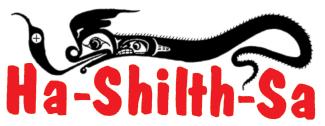

INTERESTING NEWS

52 - No. 14—July 17, 2025
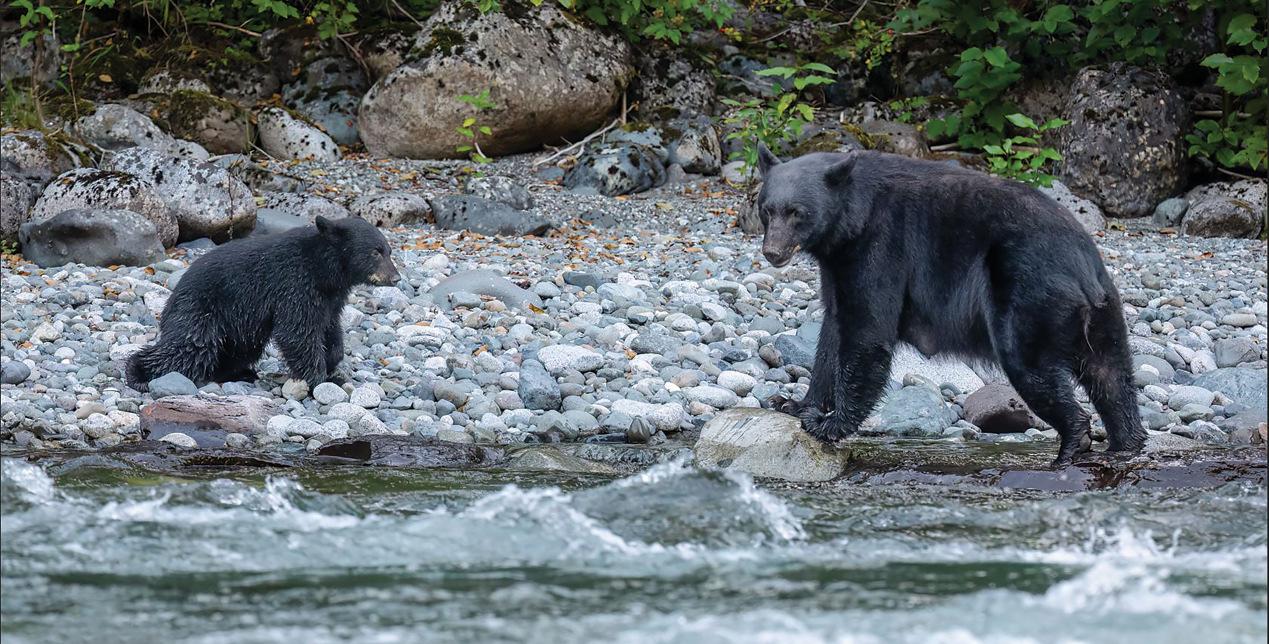
The BC Conservation Officer Service urges people to securely store their food garbage, after three
3 bears killed as human-wildlife conflict turns grim
Improper disposal of fish waste blamed for Ucluelet encounters, which include reports of bears entering homes
By Nora O’Malley Local Journalism Initiative Reporter
Ucluelet, BC – Three young, adult male black bears were executed by B.C. conservation officers this week in the Ucluelet area to ensure public safety.
One of the black bears was killed on Wednesday, July 9 after multiple reports of over several days of the animal accessing garbage and non-natural food from a campground, including accounts of the bear breaking into tents to access food, according to BC Conservation Officer Service (COS).
Asecond bear was executed on July 9 and another was killed on July 8. Both bears were seen busting into garbage bins, as well as breaking into occupied residential homes in search of food, causing property damage.
“One of those bears also approached a group of children near a resort, while the other bear guarded garbage cans at a different resort as officers arrived,” COS said in an email statement.
Mayco Noel is the co-owner of Ozzard Environmental, Ucluelet’s garbage and recycling service provider. He is the former mayor of the town and a newly re-elected councillor.
He said the bear that became habituated to the resort was a direct result of tourists
Inside this issue...
putting fish waste into cardboard bins.
“We have many bear proof bins out there. Unfortunately, cardboard bins are right beside them and we have people that don’t respect the environment that they’re in. That’s what happened at the (resort), tourists were putting the wrong product in the cardboard bin. I think, literally, the bear was shot inside the cardboard bin,” said Noel.
“Fish waste should be disposed in a lockable bear proof, metal bin, not into plastic Rubbermaid totes,” he continued.
COS says the majority of reports related to all three bears occurred during daytime hours when people were present. They told Ha-Shilth-Sa that they continue to receive reports of additional bears in the Ucluelet area displaying similar foodconditioned behaviour.
“Bears with a conflict history that no longer fear people are not candidates for rehabilitation or relocation, as the risk to public safety is too great,” said COS Sgt. Dan Eichstadter. “We continue to urge residents, visitors, campers and businesses to ensure their attractants are securely stored. It’s the best way to help keep people, and bears, safe.”
Roadside organics collection launched in Ucluelet in winter 2022. Noel does not see this relatively new service as the reason for so-called ‘garbage bears’acting
Cost of illegally camping................................................Page 4
Lisa Marie Young Memorial March...............................Page 7
Ditihdaht Days...................................................Pages 10 & 11
Bill C-5: ‘Crisis response’or ‘authoritarianism’?........Page 14 Rugby player gets Team Canada funding.....................Page 19
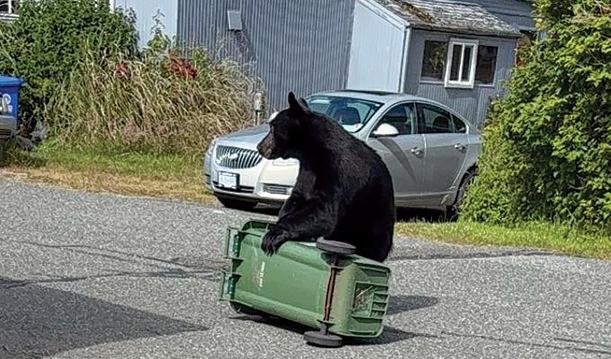
especially aggressive this summer.
“Before that, it would just be regular garbage can we’d put outside,” he said. He thinks, often times, conflict arises due to poor waste management by the residents and commercial vendors.
“You get away not locking (your bin) all winter and when the bears show up in June and it’s too late,” said Noel, adding that better bylaw patrols and stiffer fines might ease wildlife-human conflict.
COS are continuing to monitor bear activity in the area and will respond as
necessary to ensure public safety. They are asking residents to ensure doors, windows and garages are not left open.
“Bears can follow the scent of food right into your home. Securing and monitoring your home in bear country is essential,” said COS.
For safety tips and resources to help reduce human-wildlife conflict, visit: WildSafeBC.com.
Report all wildlife conflicts to the COS RAPP line at 1-877-952-7277.
Roland Smith photo
black bears were killed over two days in Ucluelet in early July.
Lisa Falloon photo
Ayoung adult male black bear jostles with a garbage bin in Ucluelet. Three bears were killed this week after becoming habituated to garbage and human food.
Death on Pacheedaht reserve was ‘non-criminal’
Police rule out homicide and release man after initially investigating ‘suspicious’ activity and making an arrest
By Eric Plummer Ha-Shilth-Sa Editor
Port Renfrew, BC - What began as a homicide investigation on the Pacheedaht reserve has concluded to determine that the cause of a recent death is “non-criminal in nature,” according to police.
Shortly after 9 p.m. on June 23 the Sooke RCMP were called to the community by Port Renfrew, in response to a report of a man with blood on him near Pachidah Road.
“As police attended, they also located an injured man who, despite life-saving measures, was later confirmed to be deceased,” stated the RCMP in a press release as the investigation was in its early stages. “Initial information led investigators to believe the death to be suspicious and was treated as a homicide.”
An arrest was made at the scene. The RCMP’s Vancouver Island Integrated Major Crime Unit took over the investigation, which eventually led police to rule out homicide.
“As a result of the police investigation, in conjunction with the ongoing concurrent fact-finding investigation being conducted by the BC Coroners Service, the death is no longer considered suspicious and is non-criminal in nature,” stated an RCMP press release issued on July 3. “The individual arrested has been cleared in this matter.”
The investigation is now in the hands of the Coroners Service.
With just under 300 members, the Pacheedaht are Vancouver Island’s most southern Nuu-chah-nulth nation. Their main reserve community is in the Port Renfrew area.
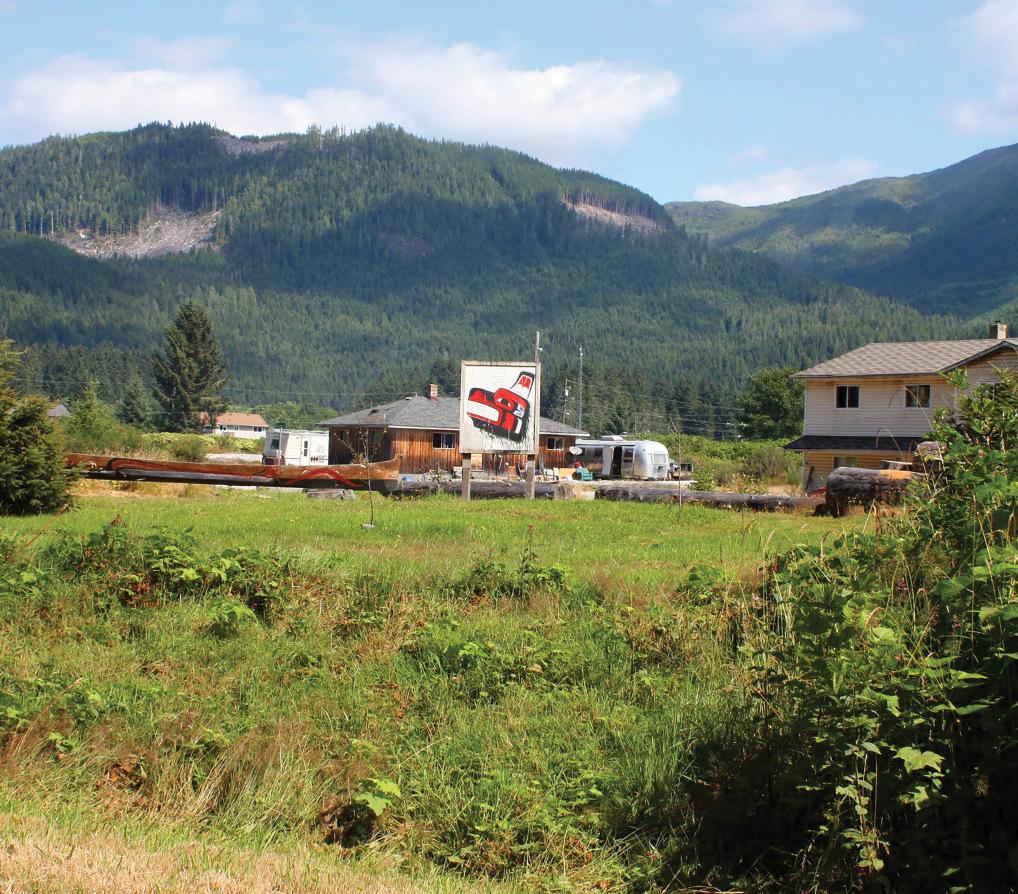

Submitted photo
With just under 300 members, the Pacheedaht are Vancouver Island’s most southern Nuu-chah-nulth nation. Their main reserve community is in the Port Renfrew area.
Murder charge, trial set for death of George David
Woman faces second-degree murder charge for 2016 death of Tla-o-qui-aht
By Denise Titian Ha-Shilth-Sa Reporter
PortAngeles, WA –Awoman accused of killing George Cecil David, 65, in a Port Angeles residence back in March 2016 is going to trial onAugust 11, 2025. Tina MarieAlcorn, 55, was charged with 2nd degree murder and was booked into Clallam County Jail on June 9, 2025. Tina MarieAlcorn, of Phillips County, Arkansas, was taken into custody by the PortAngeles Police Department (PAPD) in early June in connection to the 2016 homicide of George Cecil David, a master woodcarver from Tla-o-qui-aht. In 2016, David was living in Neah Bay with family.
According to the PAPD, Mr. David, 65, was found deceased on March 28, 2016, in a PortAngeles apartment where he had been staying temporarily. “He had traveled from Neah Bay just days earlier, intending to visit family in British Columbia and attend a funeral,” they stated in a social media post.
David died of blunt force trauma to the head and a coroner ruled the death a homicide according to early reports. The PAPD say thatAlcorn was identified early in the investigation as the primary suspect. They arrested her on unrelated outstanding warrants in Mount Vernon, Washington onApril 19, 2016. Arkansas authorities issued the warrants. Alcorn was extradited toArkansas and served time for violating the conditions of her probation on an unrelated felony theft conviction.
In 2024, the PortAngeles Police Department reopened the case after partnering with the newly established Washington StateAttorney General’s Missing and Murdered Indigenous Women and People
carver, with a trial coming Aug. 11
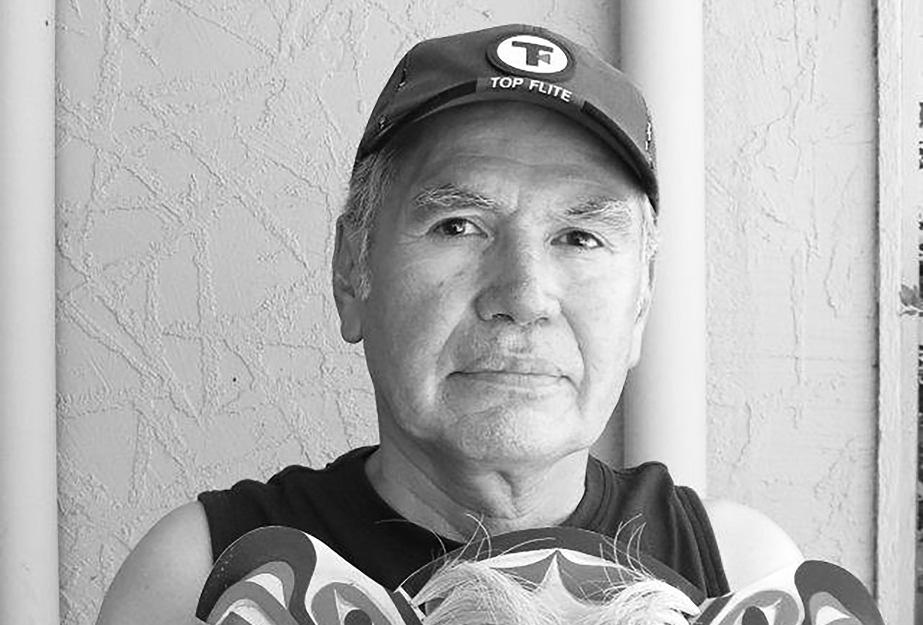
(MMIWP) Task Force.
Established in 2021 that MMIWPTask Force strives to address the systemic causes of violence against Indigenous people. It brought resources to PAPD authorities that advanced the investigation.
“This case has never been forgotten,” said PortAngeles Police Chief Brian S. Smith in a statement. “The renewed investigation, bolstered by our partnership with the MMIWPTask Force, reflects our commitment to justice and to honoring
George David’s memory.”
Alcorn was booked into the Clallam County Jail by PAPD on June 9, 2025. She appeared in court on June 10 and remains in custody on one million dollars bail.
“We are glad that there will be some justice for late George and the family,” said Tla-o-qui-aht Chief Councillor Elmer Frank. “George was a well-respected elder and is missed dearly. Finally, having someone arrested for his death is going to
help bring closure to our Nation and his family,” he added.
Alcorn appeared in court on June 20, 2025, at an arraignment hearing. Her trial date was set forAugust 11, 2025. The trial is expected to take four weeks. Anyone with information related to this case is encouraged to contact the Port Angeles Police Department at 360 452 4545 ex 1.

Facebook photo
Tla-o-qui-aht artist George Cecil David died in PortAngeles, Washington, in March 2016. MarieAlcom has been charged.
Illegal camping near Tofino could fine up to $25,000
Conservation officers shoot a bear due to garbage left behind, as Tofino visitors spill over to unauthorized areas
By Nora O’Malley Local Journalism Initiative Reporter
Kennedy Lake, BC – July has arrived on Vancouver Island’s West Coast and so has the onslaught of ignorant campers – plus the garbage they leave behind.
To encourage respectful camping practices, Parks Canada and local authorities are conducting regular patrols, targeting illegal camping within the areas of the ClayoquotArm, along the Kennedy Lake Watershed, within Tla-o-qui-aht, Yuułuʔiłʔath, and Toquaht traditional territories, on municipal streets and lots, and within BC Parks and Pacific Rim National Park Reserve.
“As per the Canada National ParksAct, individuals can be fined up to $25,000 for camping without a permit,” said Dave Tovell, Pacific Rim National Park Reserve superintendent.
During the Canada Day long weekend, Ucluelet residentAwilda Sanchez witnessed a group of about 15 people set-up a canopy and five tents at a section of beach near the Kennedy Lake Park boat launch. She says they likely camped in the same spot for two nights; The area is clearly marked with signage that says it’s for day-use only and that overnight camping is not permitted.
“I couldn’t believe it,” said Sanchez. “They were ready for camping. They were having their breakfast on Monday. They came ready to camp anywhere they could find and they may do it in the future.”
Sanchez reported the unlawful campers to the Ucluelet RCMP and after the long weekend, she returned to the site and cleaned up the garbage the out-oftowners had left behind.
“It’s important for people to know that camping in an unauthorized area is not acceptable in this area. People on the West Coast are very respectful of the land in the protected area. It’s not welcome, this kind of behaviour here,” said Sanchez.
Local leaders issued a joint media statement on June 24 urging campers to reserve campsites before journeying to the Pacific Rim.
“The disrespectful behaviours of some users have had a negative impact on Indigenous territorial lands and on highly sensitive ecological areas, including local aquifers,” reads the joint media release.
“Garbage left behind from unauthorized camping contributes significantly to local environmental degradation and can also lead to negative wildlife interactions.Animals that have been fed or have
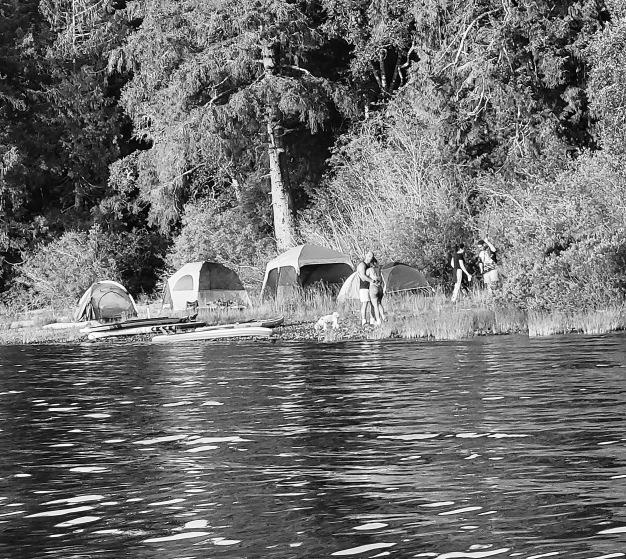
Sanchez photo
Ucluelet residentAwilda Sanchez snapped this photo of a group of about 15 outof-towners unlawfully camping at Kennedy Lake during the Canada Day long weekend.
found food left by humans can quickly become food conditioned. These animals often become increasingly aggressive food-seekers, ultimately posing a danger to people and pets,” the media statement continues.
Tla-o-qui-aht Tribal Parks Guardians have long been working with Parks Canada, BC Parks and local governments to find a solution to curtail the negative impacts illegal campers have on the land.
InAugust 2021, a road closure was set-up to block tourists from entering the Kennedy Lake area.
Establishing a campground at chuu’is, the popular day use area on Kennedy Lake known as Rainbow Beach, is a possibility.
“However, this is purely a fiscal situation since a campground established in this rural setting will not be cheap,” said Saya Masso, Tla-o-qui-aht First Nation’s manager of Lands and Resources.
“With costs to establish a ‘campground with services’at such a height, our Guardian program is focused on education and awareness, and presence,” said Masso in an email.
In B.C., any person may camp on Crown land for up to 14 consecutive days, permitting they follow some rules, like packing out garbage, respecting wildlife and following fire restrictions. When it comes to Kennedy Lake, or
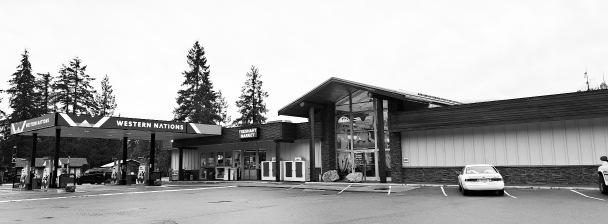

He encouraged campers to use portable propane fires as an alternative to having a fire out in the open.
“We are obviously a different climate here with our humidity, but that is definitely changing. I’ve been noticing in the six years that I’ve been out here the trends in the weather are warming up or drying up. It’s just a matter of time that it does happen out here, so we really want people to think of wildfire as a threat,” he said.
Local leaders say if campers can’t get a reservation at a Tofino or Ucluelet campground, they should consider booking a hotel or motel or delaying their trip to the West Coast.
Tourism Tofino has anAccommodation Inquiry Form on their website that puts travellers in touch with accommodation providers with vacancy.
For campers winging it, the West Coast Campground located at 2201 Pacific Rim Highway across from the Pacific Rim Visitor Centre at the junction of Highway 4 takes bookings online and usually has availability for last-minute guests. Tent sites are under $35 per night.
Haa’uukmin, within the Tla-o-qui-aht First Nations Tribal Park, jurisdiction is complicated, with areas belonging to the Crown,Alberni-Clayoquot Regional District, BC Parks, Parks Canada or Mosaic Forest Management.
Backroads campfires also contribute to an increase in wildfire risk, putting pressure on local emergency services.
“BC Wildfire doesn’t have a presence on the West Coast,” said Ucluelet Fire Chief Rick Geddes. “If they do get word of a possible incident, they will contact me and we will do our best to investigate. That ties up a lot of resources and often times it’s unnecessary when these fires can be prevented. We would act on it while BC Wildfire crews are trying to get out here.”
Geddes told Ha-Shilth-Sa that like all fire chiefs, he cautions about wildfires.
“If you’re on a budget, $35 camping in Tofino and Ucluelet is unseen these days,” said West Coast Campground owner David Schiaffino.
“(Conservation Officers) just shot a bear today (July 9) because of this pollution that tourists are leaving behind. It’s the worst thing,” he said. “It’s sad that we see a lot of wildlife being in danger for the amount of debris that is left in the woods.”
Parks Canada encourages members of the public to report any illegal activity to park wardens immediately by calling Jasper Dispatch at 1-250-726-3604 or 1-877-852-3100.
For suspicious fire activity within the municipality of Ucluelet call the district office: (250) 726-7744 or the District of Tofino Fire Department: (250) 725-3365. If it’s after hours or an emergency, call 9-1-1.

Awilda
Algae bloom turns coastal waters tropical blue
Phenomenon can be seen from space, caused by a phytoplankton process that usually follows a warm period
By Nora O’Malley Local Journalism Initiative Reporter
Vancouver Island, BC – Some West
Coasters say it reminds them of herring spawn. Others say it mirrors the milky blue of glacial waters or the warm palette of a tropical lagoon.
The phenomenon taking place off the coast of Vancouver Island is called a coccolithophore bloom, and according to researchers at Fisheries and Oceans Canada (DFO) Institute of Ocean Sciences in Sidney, B.C., it’s happening more frequently since the heatwaves and El Niño events that started in 2015.
“These blooms usually follow an intense heat or warming event,” said Moira Galbraith, a DFO zooplankton taxomist, in an email.
The turquoise blue waters are so bright you can see them from space. DFO researchers have been following the bloom for several weeks via Sentinel Satellite pictures from the Copernicus Program, the Earth Observation component of the European Union’s space program.
“From the pictures you can see the bloom developing along the coast, especially Nitinat Lake,” said Galbraith.
Coccolithophores are a non-toxic microscopic protist, a type of phytoplankton with a calcareous shell made from a little sphere of calcium carbonate.
“This material is reflective, making the water appear blue/white as it reflects the sunlight through the water. Extensive blooms occur when the surface waters become quite warm and nutrient depleted,” said Galbraith.
The DFO scientist explained that coccolithophores are mixotrophs; they ingest carbon dioxide via sunlight (photosynthesis) to produce oxygen as a by product and will eat other phytoplankton.
“This makes them able to take advantage of nutrient poor, warm water with
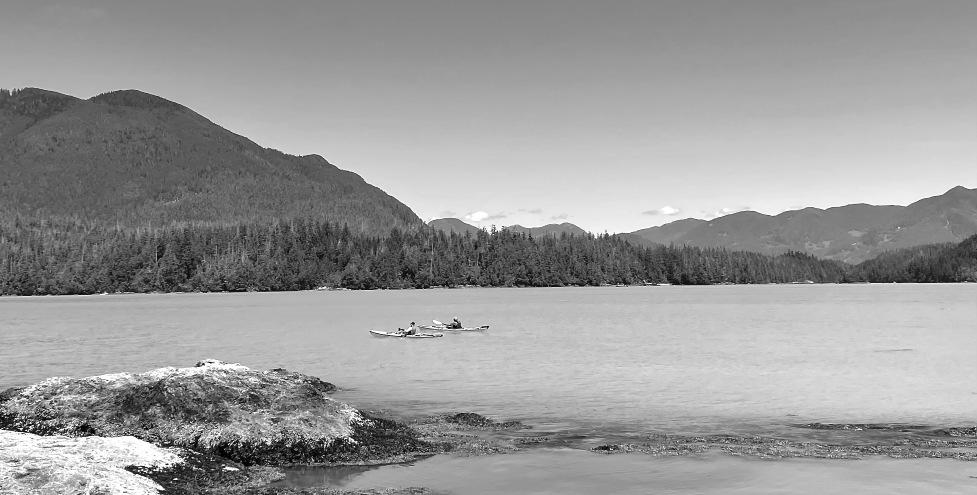
poor water mixing. Most blooms start in an embayment or inlet with restricted circulation,” said Galbraith.
Laura Griffith-Cochrane, a marine biologist and the executive director of the UclueletAquarium, says her team hasn’t seen any behavioural changes amongst the fish that reside in the catch-andrelease facility.
Visitors can see the bloom up close from within the tanks.
“It’s so, so tiny. We can’t filter it out. Whatever is happening in the harbour is happening in (the aquarium). But it’s also a great food source for a lot of organisms, so it’s not a bad thing.Alot of our filter feeders are really stoked,” she said.
The water used in the UclueletAquarium is drawn from right outside in the Ucluelet harbour. Each day, the aquarium filters 250 gallons per minute into their exhibits.
“We have noticed our dissolved oxygen levels have decreased, probably because in the process of making their little plaques they’re using oxygen molecules as well,” said Griffith-Cochrane of the phytoplankton. “Alot of the things that are eating them are feasting right now [and] are also using quite a bit of oxygen as well. We haven’t seen the dissolved oxygen levels go to a point where we should be concerned.”
“We are connected to the ecosystem. What happens out there, happens in here. It highlights that responsibility that we have to take care of the whole space that we share with everybody. I think a lot of people forget about that when they are living in places were they can’t see those connections as easily,” she continued.
Unlike some toxic algae blooms that can be harmful to marine life and human health, Griffith-Cochrane says coccolitho-
phore is “one that we don’t have to worry about for our health.”
When the bloom dies off, the calcium carbonate sinks to the bottom of the ocean, removing some of the carbon from the surface waters into sediment, according to DFO. The White Cliffs of Dover along the coastline of England, for example, are chalk coloured as a result of the calcite made from the remains of coccolithophores.
“It just falls to the ocean floor. It fertilizes the ocean,” Griffith-Cochrane echoed. “I think it’s pretty special. I keep anticipating that it’s going to go away and it’s still here.”
DFO says most fish can avoid the coccolithophore bloom as it is only in the very surface of the water, but the bloom may irritate gills if numbers are large enough and the fish are unable to move away.
Macoah and Salmon Beach get high-speed internet
By Nora O’Malley Local Journalism Initiative Reporter
Ucluelet, BC - People living in the west Vancouver Island communities of Toquaht Nation and Salmon Beach will soon be getting better access to highspeed internet.
The BC Government announced on July 11 that it would invest up to $700,000 through the Connecting Communities B.C. program, administered by the Ministry of Citizens’Services. The Government of Canada is also investing up to $700,000 through its Universal Broadband Fund. CityWest will contribute approximately $835,000.
“For the tukʷaaʔatḥ (Toquaht) people, high-speed internet is about respecting our masčim (community members) by ensuring access to education, employment and economic opportunity. It supports our taatneʔis (children) in learning, helps adults find meaningful work, attracts investment and strengthens overall community well-being,” said ChiefAnne Mack, Toquaht First Nation, in the media release.
“Connectivity also allows us to share our haaḥuupacamis (teachings), engage with ʔeʔiičum (Elders), and remain connected to one another no matter where we are. This is about more than infrastructure. It is about unlocking the potential of our people and building a stronger future together,” said Mack.
According to the province, more than 400 households on western Vancouver Island near Ucluelet will benefit from new connectivity infrastructure, including Toquaht Nation territory that includes Salmon Beach and maʔaquuʔa (Macoah, the Nation’s primary residential village).
The two “last-mile” projects will be built and operated by internet service provider CityWest.
“CityWest’s fibre-to-the-home projects will bring these residents and businesses urban-class connectivity, creating equal opportunities for more rural, remote and Indigenous British Columbians,” said Stefan Woloszyn, CityWest CEO, in the media release.
“We would like to express our thanks to the Province of B.C. and the federal government for their vision on ensuring that these communities are able to unlock their connectivity destiny,” he said.
The Province’s investment is part of StrongerBC: Good Lives in Strong Communities, the Province’s program to help build a brighter future for rural communities and the people who call them home.
In March 2022, the governments of British Columbia and Canada announced a partnership to invest as much as $830 million to expand high-speed internet services. The Province also made a specific commitment to connect every First Nations community to high-speed internet services in the government’s Declaration ActAction Plan, states the media release.
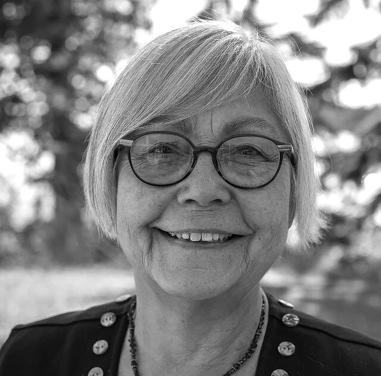
Since 2017, the Province has invested $584 million to expand connectivity in British Columbia.As of January 2025, approximately 74 per cent of rural homes and approximately 83 per cent of homes on First Nations reserves have access to high-speed internet, according to the BC Gov.
In 2021, the province launched a $10-million project to bring reliable internet and cell service to Ehattesaht First Nation near Zeballos.
Ahousaht residents living on Flores Island received internet upgrades from Telus and Conuma Cable in 2017.
For the roughly 200 people living in the community of Ditidaht at Nitinaht Lake, connectivity remains an issue with no reliable high-speed internet and cellular service.
Ditidaht members rely on a cellular hotspot at the community hall at the entrance to the village.
The Hesquiaht First Nations community of Hot Springs Cove has TELUS internet, but when there is a service outage, it could take anywhere from two to four weeks for a worker to come in, according to Hesquiaht councillor and Hot Springs Cove resident Kayla Jordyn.
John Jack, chair of theAlberni-Clayoquot Regional District said the investment in high-speed internet provides a meaningful opportunity that could change the lives of people living in Toquaht and Salmon Beach.
“Most of us take for granted that we can go online when we need to engage with others. For people who live in remote areas, that is often not the case,” said Jack.
In 2022, people in Telegraph Cove, Holberg, Houpsitas 6 of the Ka:’yu:’k’t’h’/ Che:k’tles7et’h’First Nation, and Winter Harbour on northern Vancouver Island, as well as the communities of VanAnda on Texada Island, Galiano Island and Saturna Island, received the good news that they would soon benefit from faster internet.
Nora O’Malley photo
Kayakers soak up a tropical paddle in the Broken Group Islands on July 12.Aphytoplankton bloom has caused water in the region to become an uncharacteristic light blue.
Anne Mack
Ha-Shilth-Sa newspaper is published by the Nuu-chah-nulth Tribal Council for distribution to the members of the contributing First Nations, as well as other interested groups and individuals.
Information and original work contained in this newspaper is protected by copyright and may not be reproduced without written permission from:
Nuu-chah-nulth Tribal Council P.O. Box 1383, PortAlberni, B.C. V9Y 7M2.
Telephone: (250) 724-5757
Fax: (250) 723-0463
Web page: www.hashilthsa.com facebook: Hashilthsa Ntc
2025 Subscription rates:
Non-Nuu-chah-nulth,Ahousaht, Ehattesaht,Toquaht and Ucluelet members are subject to a yearly subscription fee of $40 in Canada, $50 in the US and $60 for overseas. Payable to the Nuu-chah-nulth Tribal Council
Manager/Editor/Reporter
Eric Plummer (Ext. 243) (250) 724-5757 Fax: (250) 723-0463 eric.plummer@nuuchahnulth.org
Reporter
Denise Titian (Ext. 240) (250) 724-5757 Fax: (250) 723-0463 denise.titian@nuuchahnulth.org
Reporter
Nora O’Malley (604) 353-8488 nora.omalley@nuuchahnulth.org

Audio / Video Technician
Mike Watts (Ext. 238) (250) 724-5757 Fax: (250) 723-0463 mike.watts@nuuchahnulth.org
EditorialAssistant
Holly Stocking (Ext. 302) (250) 724-5757 Fax: (250) 723-0463 holly.stocking@nuuchahnulth.org
DEADLINE:
Please note that the deadline for submissions for our next issue is Aug. 1, 2025
After that date, material submitted and judged appropriate cannot be guaranteed placement but, if material is still relevant, will be included in the following issue.
In an ideal world, submissions would be typed rather than hand-written. Articles can be sent by e-mail to holly.stocking@nuuchahnulth.org (Windows PC).
Submitted pictures must include a brief description of subject(s) and a return address.
Pictures with no return address will remain on file.Allow two - four weeks for return.
Photocopied or faxed photographs cannot be accepted.
COVERAGE:
Although we would like to be able to cover all stories and events, we will only do so subject to:
- Sufficient advance notice addressed specifically to Ha-Shilth-Sa.
- Reporter availability at the time of the event.
- Editorial space available in the paper.
- Editorial deadlines being adhered to by contributors.
LETTERS and KLECOS
Ha-Shilth-Sa will include letters received from its readers. Letters MUST be signed by the writer and have the writer’s full name, address and phone number on them. Names can be withheld by request.Anonymous submissions will not be accepted. We reserve the right to edit submitted material for clarity, brevity, grammar and good taste. We will definitely not publish letters dealing with tribal or personal disputes or issues that are critical of Nuu-chah-nulth individuals or groups. All opinions expressed in letters to the editor are purely those of the writer and will not necessarily coincide with the views or policies of the Nuu-chah-nulth Tribal Council or its member First Nations. Ha-Shilth-Sa includes paid advertising, but this does not imply Ha-Shilth-Sa or Nuu-chah-nulth Tribal Council recommends or endorses the content of the ads.
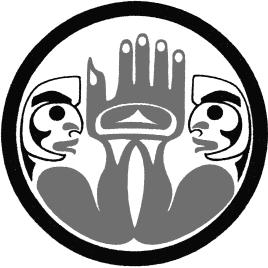
Ahousaht member competes in pageant
Destiny Kitlamuxin chosen
By Sam Laskaris Ha-Shilth-Sa Contributor
Vancouver, BC – Destiny Kitlamuxin
admits she had some initial reservations about competing in an upcoming event.
But now Kitlamuxin, a member of Ahousaht First Nation, is rather keen that she’s been chosen to take part in the Miss Indigenous Canada pageant.
The competition, which runs July 23-27, will be held in Six Nations of the Grand River in Ontario. Six Nations, located about 100 kilometres from Toronto, is the most populated First Nation in Canada.
This marks the second year that Miss Indigenous Canada will be staged. The inaugural event was also in Six Nations.
Kitlamuxin, who is 27 and has lived in Vancouver her whole life, said she heard about the event last year through some networking.
So, she decided to send in an application for the 2025 event.
“I didn’t really expect much of it,”
Kitlamuxin said. “It’s just something that came up that I thought I could be a part of.”
Kitlamuxin was notified early this year that she had been selected as one of the 20 contestants for this year’s competition.
“When I got accepted at first, I didn’t want to do it because I felt it was too out of whim,” she said, adding it took talking to her peers and people she trusts that convinced her to change her mind.
Kitlamuxin had never entered a pageant before.
“This is just something that I thought would be really awesome to be a part of,” she said. “It was just a few of my friends that were talking to me about it.”
Miss Indigenous Canada is unlike many other pageants, which focus on the contestants’looks.
All entrants must write an essay and also be interviewed as part of the competition. They must also partake in a cultural presentation and create a scrapbook, providing some insightful details of their home community.
“There’s a lot of preparation,” Kitlamuxin said.
Despite her initial hesitations, Kitlamuxin is looking forward to the event. When asked why she wants to compete, Kitlamuxin said, “I think being around
to take part
in Miss Indigenous Canada at Six Nations
other Indigenous women that are confident in their abilities to create leadership and changes in their community. I’m just looking forward to being around those kinds of people.”
Part of the pageant scoring is the overall impression one leaves.
“I think it feels good,” Kitlamuxin said of the fact it is one of the pageant components. “I think we deserve to feel beauty within ourselves. So, it can be about that. It depends on what people bring to it. But I think for the most part it’s about having Indigenous resiliency and sharing our components of our community and what we bring from our community and our Nations.”
Kitlamuxin is also pleased leadership attributes are included.And she is happy to provide information about her Nuu-chahnulth First Nation.
She is anAhousaht member through her mother Janet Keitlah.
“I never saw myself being in a pageant, to be honest,” Kitlamuxin said. “But I think that if we can share the parts of our community and our culture and be proud of that, I think it’s really awesome to show that.”
And now she’s rather pumped that she will be part of the event.
“I’m excited,” she said. “I think I’m going for the experience and to be around other strong Indigenous woman.”
She added she’s not concerning herself about any particular placing at Miss Indigenous Canada.
“I want to go for the experience,” she said. “That’s my whole priority - going in to just be inspired by other Indigenous women to do great.”
The event will include workshops, guest speakers and museum tours.
All contestants are required to pay a $1600 registration fee, which covers their accommodations and meals.
“I’m supposed to be looking for sponsorships,” Kitlamuxin said. “But I’m pretty busy. I have two jobs.And I’m also going back to school and figuring out my ends.”
For the past three years Kitlamuxin has been working as an Indigenous cultural liaison worker with RainCity Housing, a Vancouver-based charitable organization that provides housing and support programs for those experiencing home-
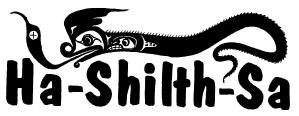
Ha-Shilth-Sa belongs to every Nuu-chah-nulth person including those who have passed on, and those who are not yet born.Acommunity newspaper cannot exist without community involvement. If you have any great pictures you’ve taken, stories or poems you’ve written, or artwork you have done, please let us know so we can include it in your newspaper. E-mail holly.stocking@nuuchahnulth.org. This year is Ha-Shilth-Sa’s 51st year of serving the Nuu-chah-nulth First Nations. We look forward to your continued input and support. Kleco! Kleco!

lessness and mental health, trauma and substance use issues.
Kitlamuxin was also recently hired as a child and youth worker by the Surrey Schools.
Plus, she’ll be returning to her own studies in September, pursuing a Bachelor’s degree in social work at the Nicola Valley Institute of Technology.
She previously spent two years studying at Native Education College in Vancouver. She was able to transfer her credits from that school to her new program.
Kitlamuxin was asked whether she will consider entering other pageants in the future.
“Probably,” she said. “I’ll see how I feel. I’m kind of open to any ideas of what life brings me.”
Kitlamuxin said she has never met Ashley Callingbull, a member of Enoch Cree Nation inAlberta, who was crowned Miss Universe Canada last year. But she herself is inspired by Callingbull.
“I think she’s doing a lot of great work,” Kitlamuxin said. “She’s inspiring other Indigenous women to be leaders and to advocate.”
The Miss Indigenous Canada competition is open to First Nations, Métis and Inuit women with a verifiable community affiliation. Entrants must be Canadian residents.And they must also be between the ages of 18-30.
Legal Information
The advertiser agrees that the publisher shall not be liable for damages arising out of errors in advertisements beyond the amount paid for space actually occupied by the portion of the advertisement in which the error is due to the negligence of the servants or otherwise, and there shall be no liability for non-insertion of any advertisement beyond the amount paid for such advertisements
Destiny Kitlamuxin
Walk marks 23 years since Young’s disappearance
Hundreds participate in memory of the young woman, as family pleads for information to locate her remains
By Denise Titian Ha-Shilth-Sa Reporter
Nanaimo, BC – Hundreds of people showed up at Nanaimo’s Maffeo Sutton Park to mark the 23rd year since Lisa Marie Young, then 21, vanished following a night out with friends.
On June 29, 2002, Lisa joined friends at a Nanaimo nightclub to celebrate a friend’s birthday. She was about to start a new job and move into a new apartment.
But when her parents hadn’t heard from their only daughter the next day, concern turned to panic when Lisa’s former roommate told them that Lisa hadn’t moved her belongings into her new apartment.
Friends and family subsequently learned that Lisa and her group of friends met a man driving an older red Jaguar at the nightclub who offered to drive some of them to a house party.At around 3:00 a.m. on June 30, 2002, the man offered to drive Lisa somewhere to get a bite to eat. That was the last time she was seen by friends.
Extensive searches were conducted around Nanaimo in the years following her disappearance. Both the police and Young’s parents, Don and Marlene (Joanne) Young, said from the start that they believe Lisa met with foul play.
The man driving the Jaguar was identified as Christopher WilliamAdair and he has been questioned by the police. The RCMP say he is a person of interest in the case and he has never been charged with a crime in Lisa’s disappearance.
In January 2025, Ha-Shilth-Sa reported that Christopher WilliamAdair has lived in Türkiye for the last several years, residing in Fethiye, a seaside tourist location since 2017.Adair also spends time in the Philippines, as was reported on Dec. 30, 2024, from the newspaper Türkiye Today.
The Nanaimo RCMP are now treating Lisa’s case as a homicide. Lisa’s family pleads not only for justice but also for information that will allow them to locate her remains.
On Sunday, June 29, 2025, a group of Lisa’s friends and family led by Carol Frank marched from the Nanaimo RCMP detachment to Maffeo Sutton Park. Carol wore a t-shirt with her niece’s face printed on the front.
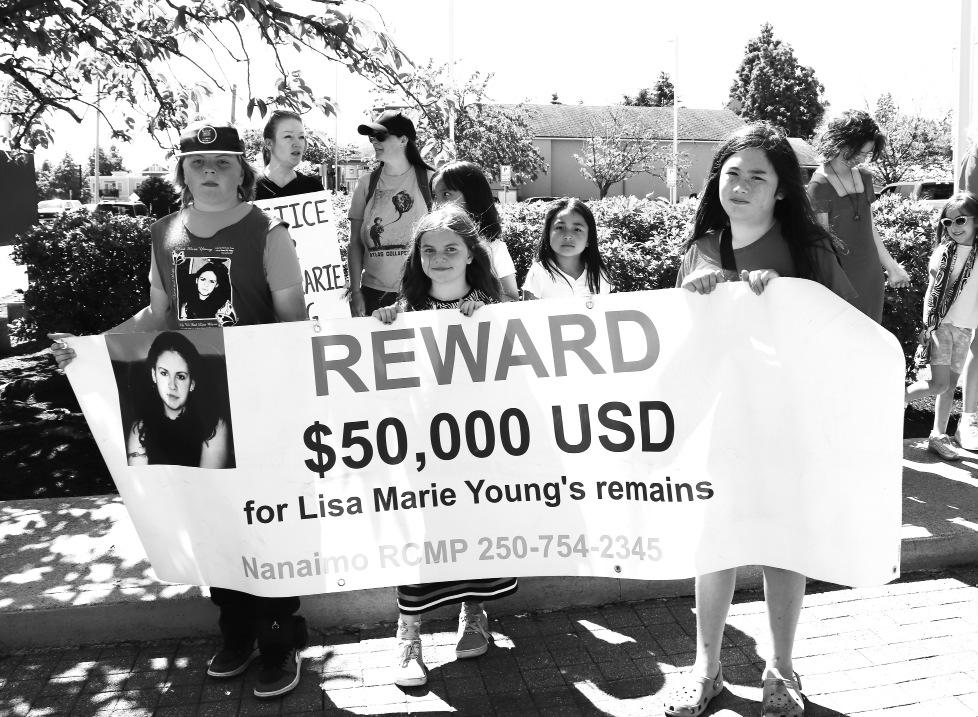
Hundreds of people met the group at the park’s pavilion, which was decorated with red dresses, symbolizing Canada’s hundreds of missing/murdered Indigenous women. There were photos of Lisa everywhere along with sprigs of cedar and red roses.
Watching from the sidelines was Wayne Clary who was there on behalf of BC FILU (British Columbia Family Information Liaison Unit). The BC FILU is a provincial frontline victim service unit for families of missing or murdered Indigenous women and girls. It is designed to assist them in accessing information they are seeking related to the loss of their loved one.
Clary, a retired investigator who has worked on the Highway of Tears and Pickton cases, explained that FILU came because of the MMIWG (Missing Murdered Indigenous Women/Girls) Final
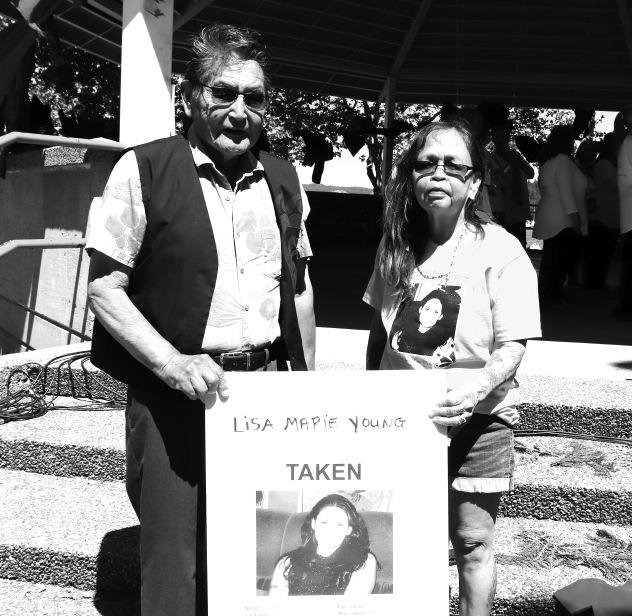
Report.
In his role at the BC FILU, he and fellow police officers meet regularly with the families of missing/murdered Indigenous people to provide the most up-todate information to them. They have been meeting with the family of Lisa Marie Young every year for about six years.
Clary said he met Lisa’s mother, Joanne, at one of the first meetings in about 2019 at Long Beach.
Of all the FILU’s across Canada, Clary says British Columbia is the busiest. That should come as no surprise as British Columbia places second behind Ontario with the largest Indigenous population.
BC FILU is keeping the Young and Martin families informed on the progress of the investigation.
Both of Lisa’s grandparents were at the pavilion, Tla-o-qui-aht elders Moses Martin and CeciliaArnet. Elder Joe Martin was also there, offering cultural support. Moses started things off by singingAmazing Grace in the Nuu-chahnulth language.
Awomen’s choir called Island Harmony Acapella was there to sing special songs in Lisa’s memory and RCMP officers were given carved paddles made by Mike Martin, Lisa’s uncle.
The Nanaimo RCMP noted that Mike Martin had gifted carved paddles to Cpl. Muir and his human remains detection dog, Luca, years before. They said it was a gesture of appreciation for their commitment to Lisa’s file.
This year, Mike made two more of his
carved paddles to Sgt. Muntener and Cst. Pinfold, in recognition of their dedication and tireless efforts on Lisa’s file.
The Martin family then bestowed Tlao-qui-aht names to Cyndi Hall and Laura Palmer for their unwavering effort and support in finding answers about Lisa’s disappearance.
Special guest speakers included Nanaimo Mayor Leonard Krog and BC NDP MP GeorgeAnderson.
Lisa Marie Young was 21 when she disappeared in June 2002. She was 5’ 4”, weighing about 115 lb (52 kg). With brown eyes and long, brown hair. Lisa was Caucasian and Indigenous (Tla-oqui-aht).
The Youngs, the Tla-o-qui-aht family and friends of Lisa have worked tirelessly to keep a spotlight on Lisa’s story. Joanne searched for her daughter until her own death in 2017. Since then, Carol Frank, Lisa’s aunt, has stepped into her sister Joanne’s shoes, acting as family spokesperson and attending events in Lisa’s honour.
Every June the family and friends of Lisa host an event to keep a spotlight on her case. She has now been missing for more years than she lived.
There is a $50,000 USD reward being offered in return for the remains of Lisa Marie Young.
Anyone with information about this case is asked to contact the Nanaimo RCMP at 250-754-2345.

Denise Titian photos
On Sunday, June 29, 2025, a group of Lisa Marie Young’s friends and family marched from the Nanaimo RCMPdetachment to Maffeo Sutton Park.
Moses Martin, grandfather of Lisa Young, and his daughter Carol Frank
Interest grows to find extent of mill contamination
A crab fishing closure in place for 30 years in Muchalaht Inlet, as memories remain of the ‘black water’ effluent
By Eric Plummer Ha-Shilth-Sa Editor
Campbell River, BC - Pollution from the Gold River Pulp Mill continues to effect Muchalaht Inlet a quarter century after the closure of the facility – but the degree that marine life is contaminated remains to be determined.
Since 1995 Muchalaht Inlet has been closed for commercial crab harvesting due to concerns over contaminants that first raised alarm with DFO five years earlier. Non-commercial crabbing is permitted under federal regulations, but with an advisory of limited consumption due to continued concerns over the health of the shellfish in the waters where the Gold River meets Muchalaht Bay. Fisheries and Oceans Canada advises that no more than 70 grams of crab hepatopancreas, an organ in the shellfish used for digestion and detoxification, be eaten in a week. But it’s currently unknown how badly - if at all - crab in the area are contaminated, explained Lisa Loseto, a research scientist with Fisheries and Oceans Canada. On June 11 she presented the situation to the Nuu-chah-nulth Council of Ha’wiih Forum on Fisheries.
With the hope of eventually gaining up-to-date data, Loseto outlined to the forum how monitoring was conducted in Muchalaht Inlet for 10 years, starting in 1988. Elevated levels of dioxin were found In Dungeness crab, which is a chemical produced in pulp and paper manufacturing, as well as from the incineration of plastics and volcanic eruptions. In 1990 dioxin levels sharply peaked in the inlet’s monitoring sites located next to the mill, then dropped in the years after, coinciding with improvements in controlling pulp mill pollution.
As a research scientist with DFO, Loseto explained that she has some funding to conduct samples of Dungeness crabs in the area. She plans to seek more support from the department to further investigate the extent of contamination in Muchalaht Inlet.
“To measure dioxins it’s about $700 a sample,” she said. “With the little money I have, I was going to look at running 10 samples. If I get more money, then I’ll try to do more and get the sediments.”
“I do think by measuring the sediments we can get a sense of much is still there,” added Loseto.
Her plan received support from the Council of Ha’wiih, including Mowachaht/Muchalaht Tyee Ha’wilth Mike Maquinna.
“Though the mill has been closed for a while, it’s our understanding that there’s a natural process of the chemicals being flushed out by itself,” he said. “Hopefully that’s happened, but there’s no certainly of knowing if it has happened or is happening.”
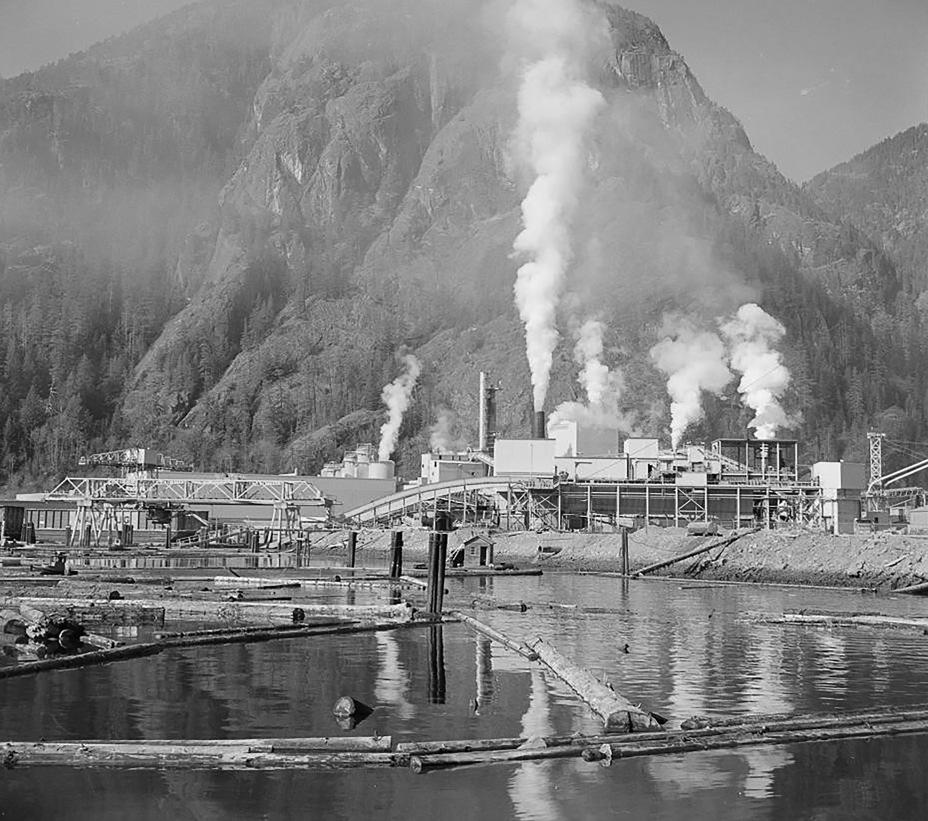
When it opened in the mid 1960s, the Gold River Pulp Mill was designed to produce 750
pulp a day. The mill operated for over 30 years, closing in 1999.
“It doesn’t go anywhere for a long time,” added the chief. “We’re wondering where it’s being flushed out to.”
Maquinna’s community lived next to the pulp mill for three decades on the Ahaminaquus reserve at Muchalaht Bay. When the newly constructed pulp mill was just starting operations in 1966, the Mowachaht/Muchalaht’s main community began its relocation from the ancestral village of Yuquot on Nootka Island to Ahaminaquus, where economic opportunity and formal education were believed to be more accessible for the First Nation. Meanwhile the town of Gold River was being established 13 kilometres north to house workers at the pulp mill, away from the pollution that proved to be a health concern for the Mowachaht/ Muchalaht.After years of living under towering plumes of smoke, in 1996 the First Nation’s main reserve was moved again, this time to Tsaxana north of Gold River, where it remains today.
AHa-Shilth-Sa article from May 9, 1996 notes why those who had endured life atAhaminaquus were given priority to select lots on the newly established

Tsaxana location.
“The ones living at [Ahaminaquus] were the priority because of health and living conditions,” said Mowachaht/Muchalaht council spokesperson LarryAndrews in the article. “It was very demoralizing there because there was no room for growth.”
The Gold River Pulp Mill was built by the Tahsis Company in the mid 1960s, taking advantage of its location within a tree farm licence with deep-water access via Muchalaht Inlet to international markets.A1967 brochure from the Tahsis Company announcing the mill’s grand opening states that pollution control was a “primary consideration” in building the facility, and that six per cent of its cost was spent in “assuring that the air and waters in the vicinity are not seriously harmed by wastes from the mill.”
The company stated that extra stages of cleaning and screening were installed,
and that the mill was designed to collect waste for re-use or sale rather than being dumped.
“Great care is taken with the disposal of the mill’s effluent,” reads the brochure, noting that this liquid was sent through a 1,700-foot tunnel into the main body of Muchalaht Inlet. “The effluent is carried deep beneath the surface and diffused so that it mixes in the natural sea water at a ratio considered safe by the federal Department of Fisheries, which has highly praised the Tahsis Company’s efforts to control pollution and protect marine life.”
“I worked in Gold River Pulp Mill for five years,” said Nuchatlaht Councillor Archie Little during the June fisheries meeting, which was hosted by his nation.
“The outflow that they tunneled to put all of the waste in the inlet on the other side, it wasn’t close to the pulp mill, that was going 24-7. Black water just pouring out.”

BC Archives photo
imperial tons of bleached kraft
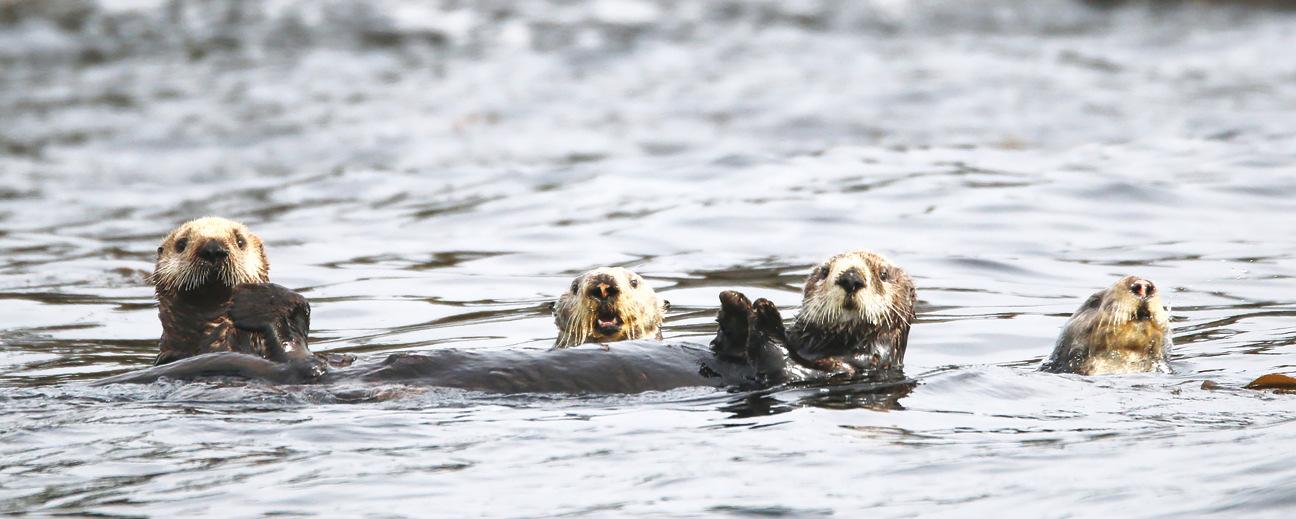
Sea otters – or kwakwat in Nuu-chah-nulth – are extremely capable hunters. They can dive to depths of 30 metres, using rocks as tools to crack open various kinds of shellfish. Males can grow up to 45 kilograms and eat as much as a quarter of their weight in a single day.
Enough for a hunt? Sea o ers threaten food sources
Since being reintroduced to B.C. coast, sea o ers have grown at an ‘almost biologically impossible’ rate
Eric Plummer Ha-Shilth-Sa Editor
Campbell River, BC - Since they were re-introduced to the B.C. coast in the early 1970s, sea otter numbers have grown more than a hundredfold – an unchecked population explosion that is taking food away from people in coastal communities, say Nuu-chah-nulth leaders.
Sea otters – or kwakwat in Nuu-chahnulth – are extremely capable hunters. They can dive to depths of 30 metres, using rocks as tools to crack open various kinds of shellfish. Males can grow up to 45 kilograms and eat as much as a quarter of their weight in a single day.
“They’re constant eating machines,” said Sean MacConnachie, the Nanaimobased section head for DFO’sAquatic Ecosystems and Marine Science department.
On June 11 MacConnachie presented the species’population trends to the Nuuchah-nulth Council of Ha’wiih Forum on Fisheries, which was hosted by the Nuchatlaht in Campbell River. Once found coastwide from California toAlaska, sea otters were traditionally hunted by coastal First Nations. Their pelts, which have the densest fur of any marine mammal, were used for clothing.After Captain Cook first landed in Yuquot in 1778, the fur trade picked up on the value of otter pelts, selling them to markets in Europe and Russia.
International demand was high, and by the 1850s sea otters were gone from many areas they occupied on the B.C. coast. By 1931 they were extinct in the province.
Populations survived inAlaska, which led to 89 being relocated to B.C. waters from 1969-72. Sent to Checlesat Bay in the territory of the Ka:’yu:’k’t’h’/ Che:k’tles7et’h’First Nations, only one third of these kwakwat survived, but within a few years a surge in population growth was evident.
DFO started doing population surveys in 1977, when 70 sea otters were counted on the west coast of Vancouver Island. By the time the last count was conducted in 2017, staff with the federal department would tally 8,110 otters, which had spread north to the central B.C. coast and to the southern extent of Clayoquot Sound. With another survey coming this year, it appears the animals have further spread in the last eight years.
“We know that they’re down in Bark-
ley Sound, they’ve wrapped around into Sooke,” said MacConnachie. “Now I understand that they’re down in Neah Bay and also in Haida Gwaii.”
The 2017 survey shows a population that is 115 times greater than the 70 who were spotted 40 years earlier.
“To maintain that level of growth is almost biologically impossible,” said MacConnachie during the fisheries meeting. “The reason why they did, I think, is because the buffet was set. It’s no surprise; they eat voraciously, and they eat just about everything and anything, and there a whole ecosystem out there for them to expand to. Very little predation and nothing but groceries.”
Mowachaht/Muchalaht Tyee Ha’wilth Mike Maquinna recently noticed the prevalence of sea otters on the coast when he travelled from Gold River to Zeballos.
“I went there by water and witnessed a whole inlet of sea otters,” he said. “It’s amazing, they look organized.”
“It’s getting quite concerning and has been for a while,” continued the chief.
“These mammals are eating a lot. They are taking away from members of my community that would normally go out and have some of these clams and oysters and crabs.”
“Our diet has been impacted by sea otters,” notedAhousaht representative Kiista, KeithAtleo, during the fisheries meeting. “It’s taking away a lot of our culture with our young people.Alot of our young people don’t know the taste of sea urchins. They don’t know some of the resources our people used to use for health.”
The population explosion of kwakwat has been a topic among Nuu-chah-nulth leaders for several years, bringing references to the old practice of tying slain otters to float near certain shellfish beds
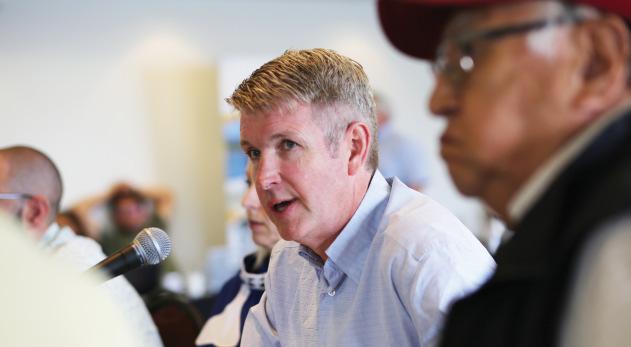
as a deterrent for others who might feast on the resource. But this is illegal under Canadian law, and the animal has been protected by an international treaty since 1911.
The Committee on the Status of Endangered Wildlife in Canada currently gives sea otters a “special concern” designation, citing that the species has “characteristics that make it particularly sensitive to human activities or natural events.”
“The species occupies 33-50 per cent of its historical range in British Columbia but is not yet clearly secure in Canada,” states the most recent COSEWIC assessment from 2022.
Meanwhile, the animal is a favourite for those visiting the VancouverAquarium, which houses rescued sea otters.
“Sea urchins are a favourite snack for otters, but without enough otters around, the urchin population can explode and devastate the kelp forests,” states the aquarium’s website in its section on sea otters. “Thankfully, since the reintroduction of these lovable animals to B.C.’s
outer coast, urchin populations have balanced out, allowing the kelp forests to make a triumphant comeback.”
“There’s a media sensation of wanting them around because they’re so cuddly and furry,” commented Maquinna.
“To those animal activist groups, to those people who support sea otters being on the endangered species list, you’re hurting our children,” stressed Kiista.
“It’s a part of our healthy diet that its affecting.”
As his staff prepare for another sea otter survey, MacConnachie reflected on a possible attitude shift among biologists since marine mammal populations were at a low in the early 1970s.
“In that time, virtually everyone that works for me, and everyone that I work with on the marine mammal management side, is solely focussed on conservation,” he said. “We are moving from a conservation-based ethic and ethos and focus, to this reality that there are species of marine mammals that are big enough to have a sustainable harvest.”
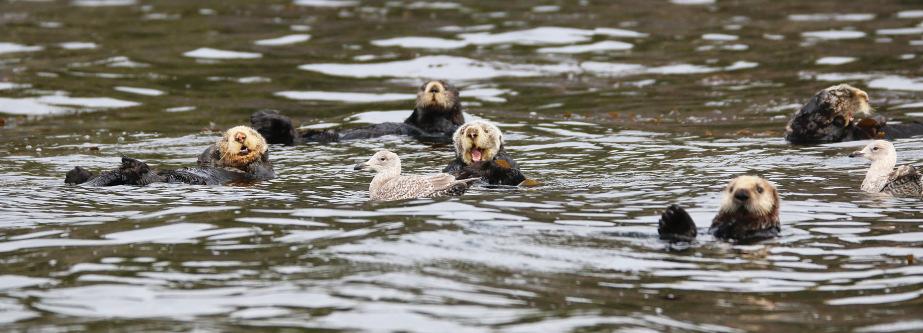
Irine Polyzogopoulos photos
Eric Plummer photo
Sean MacConnachie, the Nanaimo-based section head for DFO’sAquatic Ecosystems and Marine Science department, gives a presentation to the Nuu-chah-nulth Council of Ha’wiih Forum on Fisheries on June 11 in Campbell River.
The sun shines full for Ditidaht Days in early
Sports day was part of the four-day celebration of Ditidaht culture that unites families and friends over meals and quality time outdoors.
By Nora O’Malley Local Journalism Initiative Reporter
Nitinaht, BC - Ditidaht families wandered down to the community field on a balmy July 3 to take part in a sports day and a barbecue lunch.
Gathering on the freshly cut grass, about 30 kids spent the better part of the summer day running free and playing fun games like egg toss, tug-o-war, three-legged-race and a classic water balloon fight.
“There was a really good turnout, kind of a slow start, but eventually throughout the day, people started showing up more and more,” said Ditidaht’s cultural support worker Samantha Edgar, who was wearing her black dašuk (strong) girls’basketball team hoodie.
Sports day was part of Ditidaht Days, an early July four-day celebration of Ditidaht culture that unites families and friends over meals and quality time outdoors.
Ditidaht is a remote First Nations community on the southwest of Vancouver Island. Its traditional territory stretches inland from Cowichan Lake, down through Nitinat Lake and to the coast between Bonilla Point and Pachena Point. The main access to Ditidaht’s largest village of about 200 members is a deteriorating gravel logging road.
Last year during Ditidaht Days, members were treated to helicopter rides to view the full scale of their territory from above. This year, they went out on early morning boat tours to learn about their territory from the water.
“It’s for our future. For the young ones to see and witness,” said culture leader Bobby Durocher, who splits his time between Coquitlam and Ditidaht traditional territory.
Elder Mary Durocher has 20 grandchildren; eight of them participated in the Ditidaht sports day.
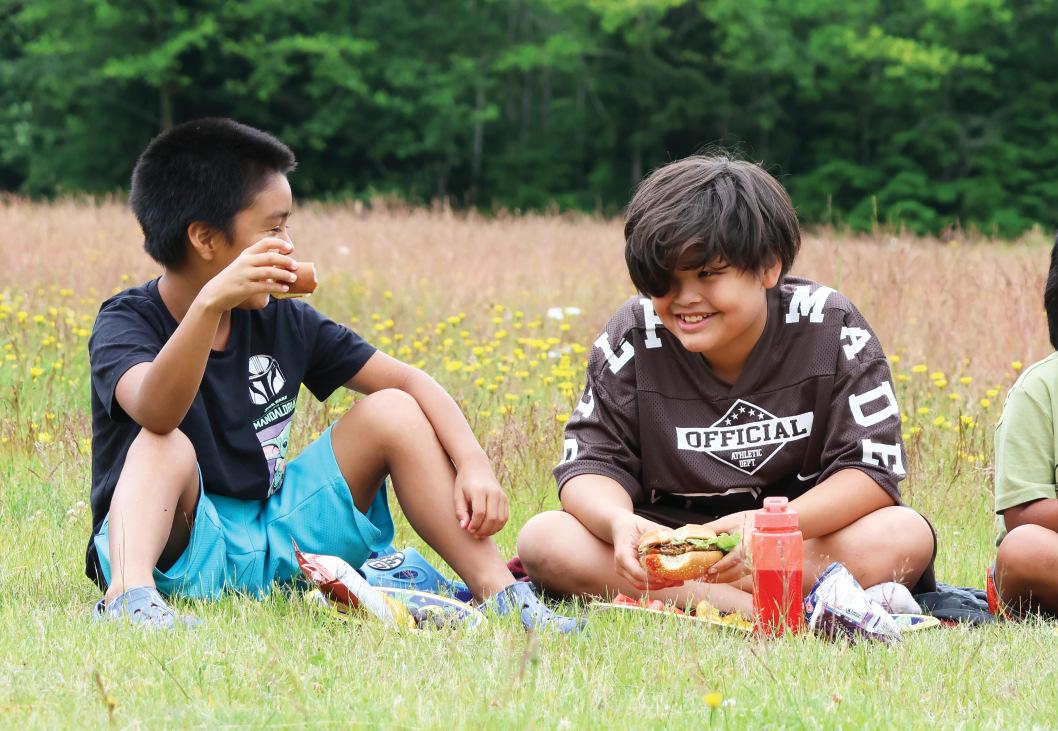
“It brought back memories. For two of my grandchildren, it’s their first time visiting. Their father is my youngest son, but their mom is from Skatin and Yakama. They were going to leave today, but they changed their mind and they are staying the whole time,” said Mary.
Skatin Nations (Skookumchuck) is located in the Mount Currie area of B.C. and Yakama Nation is based in Washington state, U.S.A.
When it came to organizing and hosting the annual Ditidaht Days sports day, Edgar says she was thankful for the support of Melanie Thomas and Yvonne Douglas.
“My boss is talking about wanting (sports days) to be more than one day, maybe two or three days. Everyone will come together and figure things out,” she shared.
Ditidaht members also took advantage of free
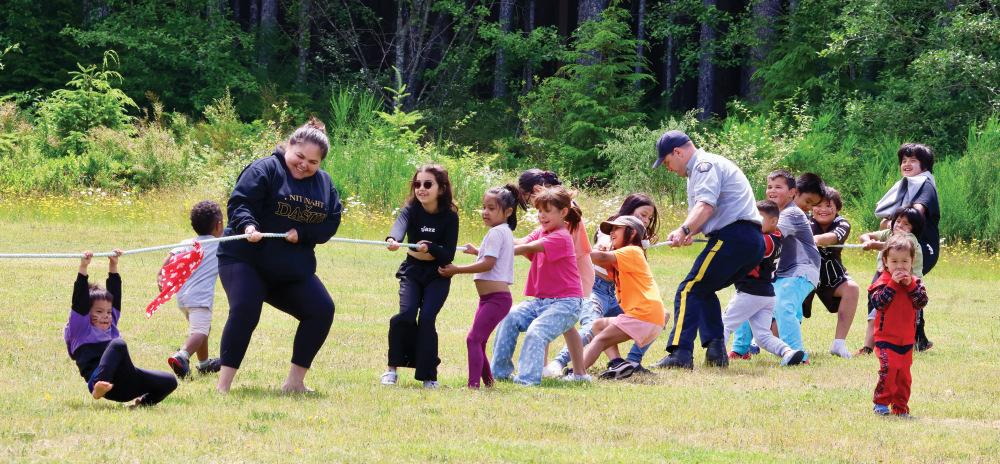
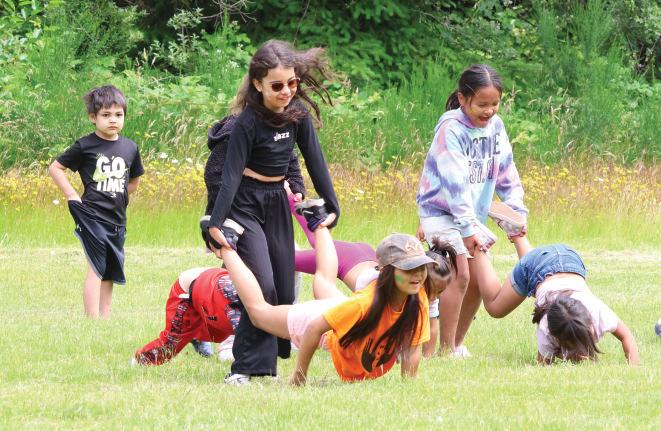
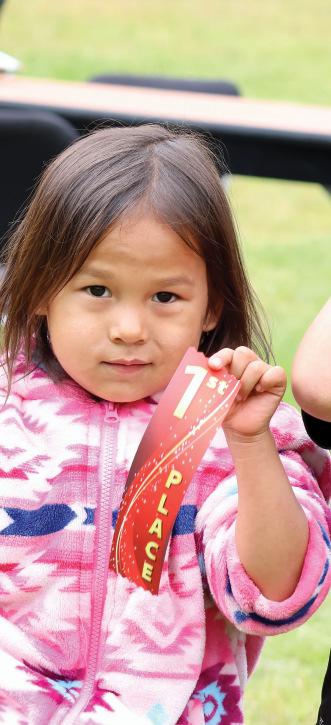
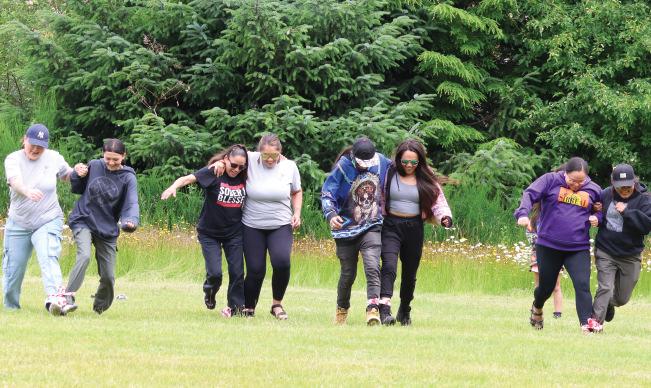
Ditidaht boys chill on a patch of grass during the July 3 sports day and barbecue by the First Nation’s community at Nitinaht Lake.
The big kids participated as well, having fun in a three-legged race.
Meet your 2025 Ditidaht Days Egg Toss champs.
Samantha Edgar leads a team in the crowd favourite game of tug-o-war.
haircuts by Myra Mack over the weekend at the main hall.
About 30 kids spent most of the summer day running free and playing fun games.
meals and quality time outdoors.
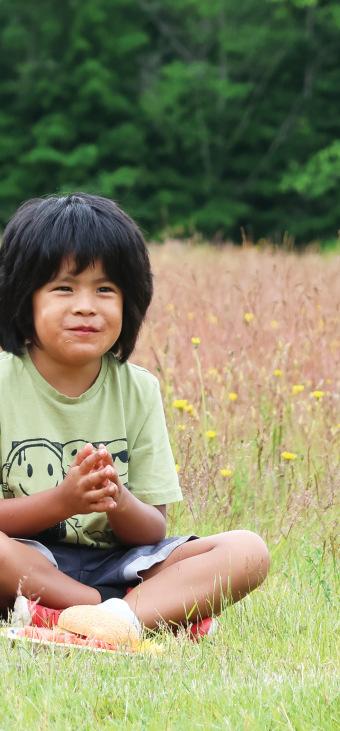
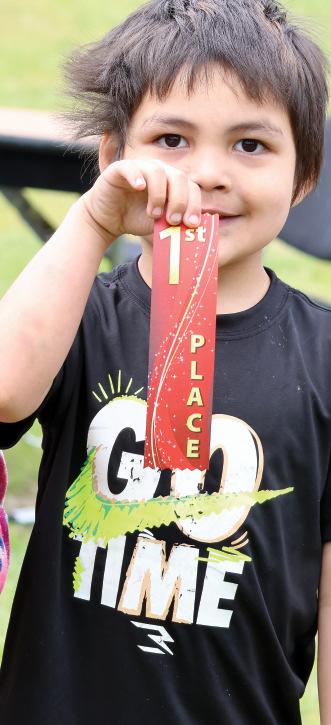
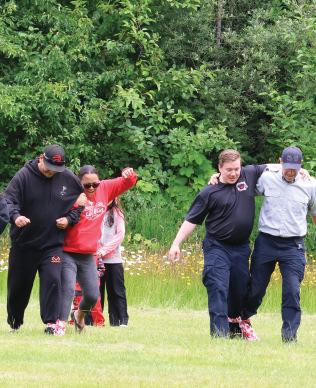
Ditidaht opens facility at Nitinaht Lake
The midpoint access to the 75-kilometre West Coast Trail now has a check-in centre
By Nora O’Malley Local Journalism Initiative Reporter
Nitinaht Lake, B.C. – Canada’s iconic West Coast Trail (WCT) on Vancouver Island just got even better with the grand opening of a new visitor centre at the Nitinaht Lake Campground.
Brought to life by the Ditidaht Economic Development Corporation (DEDC), the new building features an outdoor theatre area and indoor meeting space and will serve as a check-in centre/information hub for WCT hikers, Nitinaht Lake campers and folks staying at the Caycuse Cabins.
“I’m really proud of what we’ve done today. It’s important for you guys to know that we are working for you all,” expressed Jack Thompson, president of the DEDC, to Ditidaht members during the July 4 unveiling.
“It’s a new chapter. One thing (ourAncestors) talked about is getting to be self-sufficient; leaving a better future for our future generations, so they can build on what we’ve built today,” Thompson continued. He hopes the new building will inspire members to branch out and try different jobs, like tour guiding.
The WCT was originally established by First Nations to travel between communities in Pachena Bay (near Bamfield), Nitinaht Lake and Port San Juan (Port Renfrew). It passes through the traditional territories of Huu-ay-aht, Ditidaht and Pacheedaht First Nations and is part of the Pacific Rim National Park Reserve. Huuay-aht, Ditidaht and Pacheedaht operate the WCT in partnership with Parks Canada.
Elder Charlie Thompson says in the past, Ditidaht people used the trail to journey to potlatches, and it was also used as an emergency path for shipwrecks.
“(This centre) is a beautiful reflection of our leadership. The band could also consider building a resort to create more jobs for local people,” said Charlie.
Thompson says a resort has been on the DEDC radar since the early ‘90s, but paving the main access road to the community would likely need to come first. He told the Ha-Shilth-Sa that Ditidaht bought three parcels of land from Western Forest Products to extend and develop the famed windsurf campground and new cabins on Nitinaht Lake.
Every year, about 7,500 hikers take on the West Coast Trail, with the typical trip length being five to seven days. With multiple entry points, there could be up to 400 hikers on the trail at any given time during the peak season, according to Parks Canada.
Recent Parks Canada annual statistics for the WCT show 7,941 hikers in 2024, 7,014 in 2023, 7,741 in 2022, and 6,449 in 2021.

Nitinaht Narrows officially became a third entrance to the WCT in 2014. Hikers picking up the trail in Nitinaht can opt to go north (32-kilometres) towards Pachena Bay or south (43-kilometres) to Port Renfrew.
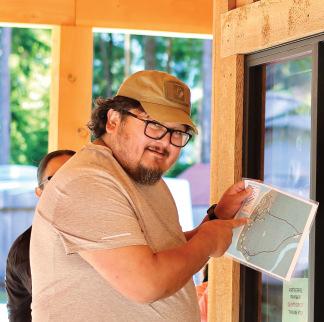
Ditidaht First Nation member Steven Charles has been greeting WCT hikers at the Nitinaht Lake Campground since 2015. During the peak summer months he’ll check-in up to 20 hikers a day then deliver a safety and tide talk before ushering the crew to the Nitinaht Narrows water taxi.
“This (visitor centre) has been a long-time coming,” said Charles. “The future plan is to host school groups.”
Before the new visitor centre, guests passing through Ditidaht traditional territory were being bounced around from building to building.
“It just opens it up to one hub,” said Nitinaht Lake Express shuttle operator/owner Gerry Peter. “It was confusing to someone that has come from Switzerland to go to the shop and to the campground office, they have no clue what’s going on. It’s better to have this one building. It will attract more people.”
Ditidaht Councillor Terry Edgar said the foundation for the visitor centre was poured in December 2024. They started construction in March 2025 and about three and a half months later, it was done.
“We kept it as simple as it could be, utilizing as many resources from our own logging operations, our own territory,” said Edgar during the ribbon cutting ceremony.
He shared that 66 per cent of the volume of wood used to build the facility was sourced and milled directly in Ditidaht territory.
“The old growth cedar on the wall comes from a recovered bridge, we didn’t fall it.
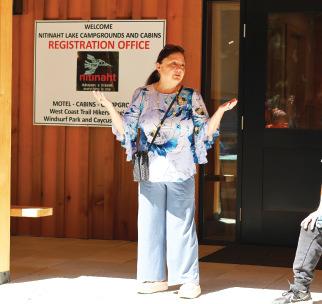
We took it back and it’s now here on the outside of this building. It’s here on these benches,” said Edgar.
“We are really proud of what I call stewardship; looking after our lands, looking after ourselves, looking after our future,” he said.
Elder Mike Thompson, 93, is the longest living Ditidaht member.
“This is a great day for Ditidaht people. Hopefully this place will prosper for years to come,” said Mike.
Ditidaht is also working with Keefer Ecological Services to grow the Caycuse Trail Network and ecotourism experience, but construction is “all subject to funding”, according to the contractor.
Following the speeches and ribbon cutting, Ditidaht members shared a delicious seafood broil of locally caught prawns, mussels and crab.
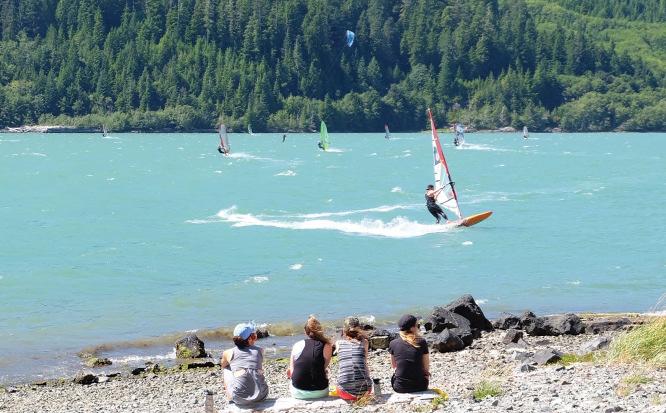
Nora O’Malley photos community at Nitinaht Lake.
Ditidaht Days Egg Toss champs.
Nora O’Malley photos
Jack Thompson, president of the Ditidaht Economic Development Corporation (DEDC), slices the cedar ribbon on July 4, officially opening Ditidaht’s new visitor hub at the entrance of the Nitinaht Lake Campground. He is joined in the back by Mary Durocher and Ditidaht Councillor Terry Edgar.
Steven Charles points to a map of the campground at the check-in window.
Ditidaht Chief Councillor Judi Thomas thanks the team that brought the new visitor centre to life.
Agroup of hikers take in the view at Nitinaht Lake, a saltwater fjord with a predictable wind season that runs from May to September.
Healing starts when cultural items come home: FPCC
Repatriation requires funding, legislative change and a commitment to Indigenous leadership, says new report
Olivia Thomas Ha-Shilth-Sa Contributor
Victoria, BC – The First Peoples’ Cultural Council (FPCC) has released two landmark reports detailing the deep impacts of colonial theft and the path toward meaningful repatriation for First Nations in British Columbia.
The reports, From Stealing to Healing: Repatriation and B.C. First Nations and the Repatriation CostAnalysis:A Framework and Model, offer a sweeping account of the more than 2,500 ancestors and 100,000 cultural belongings from B.C. currently held in 229 institutions around the globe, and the long journey to bring them home.
“This research illustrates the scope of repatriation and the incredible amount of work still left to do,” said KarenAird, the cultural council’s heritage manager.
“Self-determined repatriation of lost belongings and ancestors is crucial for cultural revitalization.”
The reports draw from the lived experiences and strategies of 16 First Nations communities across B.C., combining hard data with powerful storytelling. They emphasize what communities have long known: healing begins when ancestors and cultural items are returned to their rightful places.
Cultural repatriation involves more than the return of objects. For many communities, it is an act of justice, healing, and self-determination, says the report.
As Málágius Gerald Lawson, chair of the First Peoples’Cultural Foundation, put it, “Communities reclaiming their cultural heritage on their own terms strengthens cultural, spiritual, physical and economic well-being.”
For the Gitxaała Nation, whose first repatriation occurred inApril 2023, the return of a sacred totem pole and the ceremonial laying to rest of two ancestors reawakened cultural connections and traditional practices.
“It brought people together in a way not seen in years,” said Dustin Johnson, Gitxaała’s manager of Language and Culture.
But the process came at a great financial cost.
“Grants like those from FPCC are essen-

Huu-ay-aht members and staff lift a screen in November 2016, after its return from the Royal BC Museum, where it was kept since 1911. The wooden screen was part of several cultural treasures returned to Huu-ay-aht Ha’wiih, part of the museum’s ongoing work to repatriate items taken from a First Nation’s territory without consent.
tial to sustaining the vital work of cultural reunification, healing, and community revitalization,” added Johnson.
Institutions such as the Royal BC Museum are grappling with their colonial histories and are now working with First Nations toward meaningful repatriation.
The museum acknowledged that repatriation “is a vital part of addressing historic wrongs against Indigenous Peoples” and emphasized that “this is not simply a project or task, it is part of a broader commitment to justice and healing.”
However, challenges persist.
“Incomplete provenance information can make it difficult to trace the origins of belongings and how they were acquired,” a media spokesperson at the museum said.
Additionally, costs can be significant, including conservation treatments, transportation, and ceremonial requirements.
Still, the museum rejects the idea that repatriation reduces public access to Indigenous cultures.
“Repatriation offers an opportunity to
raise public awareness about the historical harms caused by the removal of belongings without consent,” said the museum. “Community-run museums and cultural centres are the most meaningful places to learn in depth. We encourage visitors to visit these communities and learn directly from them.”
Collaborative approaches, such as cocuration and safekeeping agreements, are increasingly common, according to the Royal BC Museum.
“Some communities choose to have belongings physically returned, while others ask us to care for the belongings while legal ownership is transferred. We honour and support these decisions through open dialogue,” stated the museum.
The Repatriation CostAnalysis provides a practical tool for communities to plan their repatriation projects, offering flexible models based on real-life examples.
But, as FPCC CEO Tracey Herbert stressed, “First Nations–led repatriation is a moral and ethical imperative to mitigate historical and ongoing cultural appropria-
tion.”
To support this work, Málágius Gerald Lawson of the First Peoples’Cultural Foundation called for long-term investment: “These investments in Indigenousled organizations help create safer and more impactful repatriation efforts and ensure lasting change for generations to come.”
The reports conclude with a clear message: repatriation requires not only funding but also legislative change, infrastructure, and an unwavering commitment to Indigenous leadership.
As the title of FPCC’s report reminds us, this is not just about returning what was taken. It is about restoring what was broken. It is about moving from stealing to healing.
To read the full reports or to learn more, visit www.fpcc.ca or contact info@fpcc.
ca For information on the Royal BC Museum’s repatriation work, visit www. royalbcmuseum.bc.ca
Phrase†of†the†week:†+’atwaa†>ih=paan’ah†h=uu†sayaa†c^apacpanuc^†h=aa%ak%iš†%uqkmis%iš†+awiic^i>†miiyi>
Pronounced ‘Klut was tle h pa nutch hoo saw ya chup took. Har uk ish ooh k mid tlah we chilt my yilth’, it means ‘Canoe Journey is coming soon. We travelled all over the coast, it’s hard, yet it gives you a such a great feeling. Family, friends and adventures!’Supplied by ciisma.
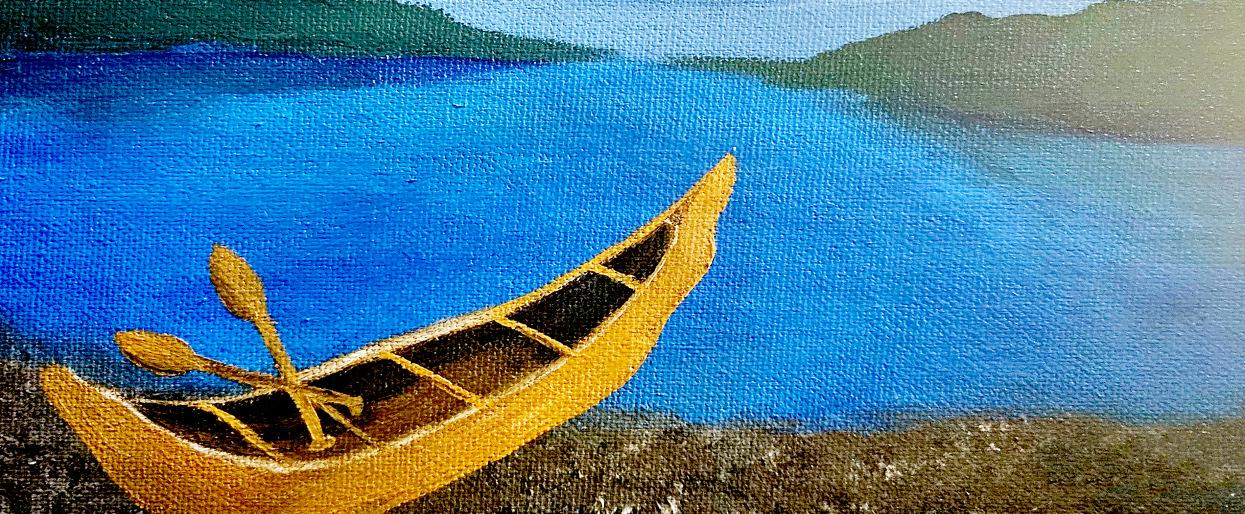
Debora Steel photo
Illustration
Work continues to be er protect ‘power places’
Heritage Conservation Act applies to over 64,000 protected – 90 per cent of which are of First Nations origin
Eric Plummer Ha-Shilth-Sa Editor
Victoria, BC - Legislation that determines how British Columbia’s heritage sites are protected is being updated, with an eye on how the new act will align with UNDRIP.
The Heritage ConservationAct applies to over 64,000 protected sites on the provincial registry – 90 per cent of which are of First Nations origin. The act regulates how these sites are protected when work is done at the locations, but as it was last revised in 1996, the current legislation is admittedly lacking, says Minister of Forests Ravi Parmar.
“The Heritage ConservationAct is how we protect important cultural and archeological sites in B.C., but the current system doesn’t work well for people, and it doesn’t fully reflect our shared values or commitments,” he said in a press release issued July 9.
Under the current legislation development activity often brings about the need for multiple permits under the act, each of which average 300 days for regulatory review. Those who are drafting the new act hope to make this process more efficient, which would allow communities to rebuild faster after natural disasters like wildfires and floods.
In development for several years, over 300 organizations have been engaged to help inform how the act should be updated, including municipalities, the archeological branch, real estate associations, construction companies and resource industries.
Back in 2019 the province passed the Declaration on the Rights of Indigenous PeoplesAct, which tasks legislators to align B.C. laws with the United Nations Declaration on the Rights of Indigenous Peoples. Following DRIPA, the new Heritage ConservationAct is being developed in partnership with the First Nations Leadership Council.
Judith Sayers is co-chair of the joint working group on First Nations heritage conservation that has been developing the new act.
“We try hard to align it with UNDRIP,” she said, reflecting that the process has demonstrated how a government can effectively collaborate with First Nations.
“It’s a huge step forward.”
So far the province and the working
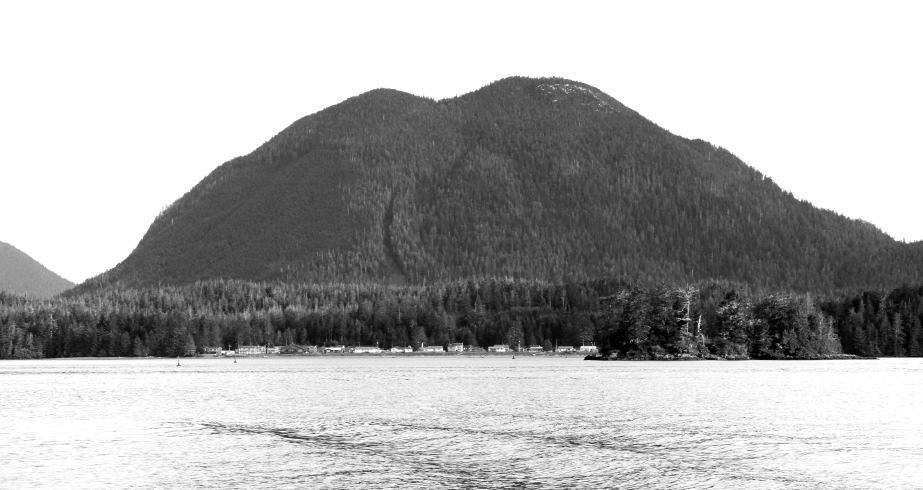
The Heritage ConservationAct is being revised, legislation that is in place to protect sites of significant cultural and historic value in B.C. Pictured is Meares Island in Tla-o-qui-aht Territory, with the village of Opitsaht on the shore.
“The Heritage Conservation Act is how we protect important cultural and archeological sites in B.C., but the current system doesn’t work well for people, and it doesn’t fully reflect our shared values or commitments.”
~ Ravi Parmar, Minister of Forests
group have managed to agree on 53 of 57 items that will form the new legislation, noted Sayers. But matters that remain outstanding are the removal of 1846 –the date that the British Crown asserted sovereignty over British Columbia – and how to compensate for past wrongs.
“We really want the province to address redress for all the wrongs that were to heritage,” said Sayers. “We couldn’t come to any agreement on that as of yet.”
The Heritage ConservationAct first came into law in 1977, but B.C. has legislated protection for historically significant places since 1925. Currently many of the sites on the province’s registry are burial grounds and First Nations village sites.

“These sites provide physical evidence of how and where people lived in the past that are integral to understanding British Columbia today and our shared histories,” stated the province in a press release.
“There’s things like Thunder Mountain in Hupacasath territory, certain landscapes need to be protected,” added Sayers. “There’s so many sacred sites through Nuu-chah-nulth, and most of those are family. Ensuring that those power places, as I call them, are preserved is pretty important.”
Another stage of engagement to inform the legislation is underway until October, with the goal of tabling the new act in spring 2026.
Proposed cultural centre plans preserved for history
By Eric Plummer Ha-Shilth-Sa Editor
PortAlberni, BC - The seeds of an idea that was once planned to become a Nuu-chah-nulth cultural centre have been returned to the tribal council, two and a half years after the passing of the project’s famous designer.
In June the daughters of Jean Jaques Andre, YvetteAndre and Bianca Message, delivered their late father’s plans to the Nuu-chah-nulth Tribal Council’s main office in PortAlberni. During the visit NTC Executive Director Florence Wylie unrolled the documents with Yvette and Bianca, which detail a proposed facility featuring a 12,500 square-foot exhibit area, plus a restaurant, gift shop, theatre, library, elders’lounge and children’s area. The cultural centre plans are the product ofAndre’s meetings with Nuu-chahnulth elders and communities in the early 1980s.Applications were underway for
federal funding, but the project was never realized as an agreement couldn’t be reached on where the facility would be.
Jean JaquesAndre died Dec. 22, 2022, leaving behind a legacy of designing dozens of museum exhibits across North America. He was the chief designer behind the Royal B.C. Museum’s Natural History, First Peoples and Becoming BC galleries. Becoming BC includes the Old Town exhibit, a recreation of early urban settlement in the province. In December 2021 the museum closed down Old Town, citing plans to “decolonize” its exhibits. But as the museum space sat inaccessible to the public, outcry led to the reopening of Old Town in July 2023, with sections of the exhibit set aside for future modern-day updates.
During their meeting with Wylie, Yvette and Bianca expressed their desire for the cultural centre plans to be preserved as an important historical record of ideas that were being explored over 40 years ago.
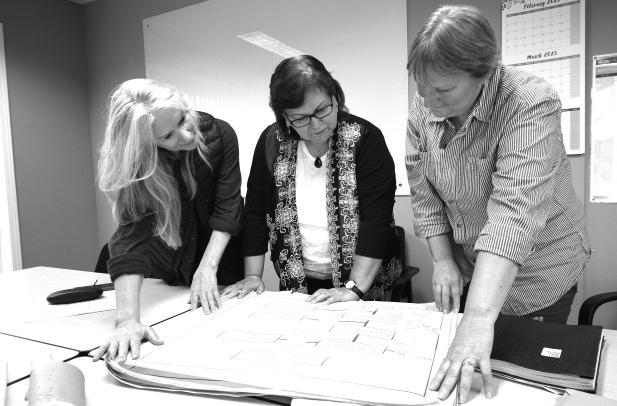
Eric Plummer photo
Eric Plummer photo
NTC Executive Director Florence Wylie (centre) unrolled the documents with Yvette and Bianca, which detail a proposed facility featuring a 12,500 squarefoot exhibit area, plus a restaurant, gift shop, theatre, library, elders’lounge and children’s area.
Province of B.C. photo
Minister of Forests Ravi Parmar says that improvements are overdue for the Heritage ConservationAct, which was last revised in 1996.
Is Bill C-5 ‘crisis response’
or ‘authoritarianism’?
Assembly of First Nations assesses next steps amid concerns that Carney government is already going too far
By Eric Plummer Ha-Shilth-Sa Editor
Amid cries that a new government in Ottawa is steamrolling over Indigenous rights to get national projects built, on July 10 theAssembly of First Nations hosted a forum on what to do about Bill C-5.
The online meeting was open to Canada’s First Nation leaders, exactly two weeks after the Building CanadaAct received royal assent. Bill C-5 enables the federal government to identify projects that are in the “national interest” to strengthen Canada’s economy.According to the legislation, these projects are selected after consultations with provinces and Indigenous rights holders, a national prioritization that aims to create more certainly for development and attract investment. The intent is to ensure that these “nation building” projects complete a federal review within two years, according to the act, enabling a “one project, one review” approach that streamlines assessments and approvals.
Information on the act released by the federal government states that a main projects office with be supported by an Indigenous advisory council, but this will not replace consultation with rights holders. Indigenous consultation is mandated by the legislation, if such a community “may be adversely affected by the carrying out of the project”.
But this is not enough to assure many Indigenous leaders that Bill C-5 will follow Canada’s commitment to protect First Nations rights, particularly the “free, prior and informed consent” stipulation within the United Nations Declaration of the Rights of Indigenous Peoples. Cindy Woodhouse Nepinak, national chief of theAssembly of First Nations, noted that Senator Paul Prosper introduced an amendment to include this language in the bill, but despite the support of 27 others senators, this addition did not pass when Bill C-5 went through the red chamber.
“This hard discussion is moving to the next stage, but the honour of the Crown is still at stake,” said Nepinak in a statement. “Canadians and parliamentarians should know that First Nations are united. Our rights are not for sale.”
The B.C.Assembly of First Nations said the bill was rushed through the House of Commons without adequate consultation.
“This is a step backwards in the relationship between the federal government and First Nations,” said BCAFN Regional Chief Terry Teegee. “Just a few years after making the UN Declaration national law, the federal government is giving itself the authority to define what is in First Nations’interests. The Trump administration will be gone in four years, but the damage this bill will do to First Nations rights and environmental protections will last generations. This isn’t crisis response, it’s opportunistic authoritarianism.”
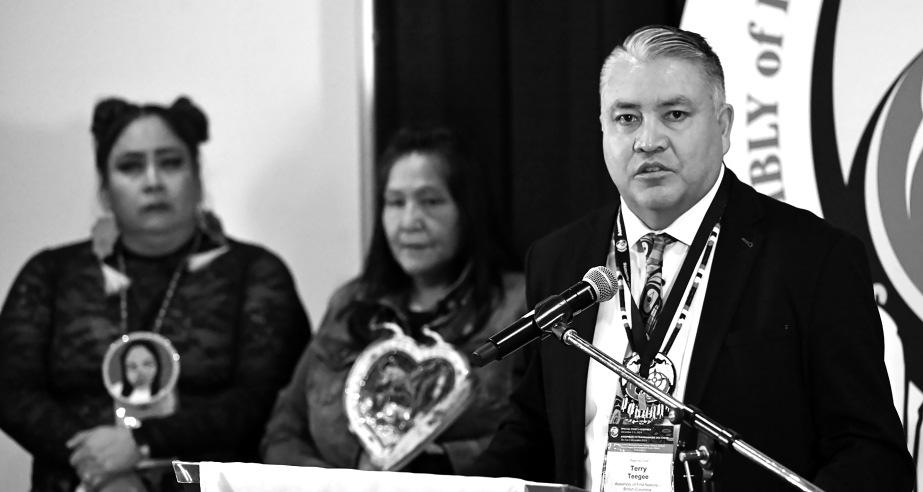
“This is a step backwards in the relationship between the federal government and First Nations,” says BCAFN Regional Chief Terry Teegee of the recently passed Building CanadaAct.
Bill C-5 follows other recent legislation passed by provinces that aim to empower the Canadian economy amid a strained relationship with its largest trading partner. In B.C. this includes the Infrastructure ProjectsAct, which was passed in late May with a razor-thin vote in Victoria. Bill 15 is designed to cut delays in getting major projects built, speeding up approvals for developments that are “designated as provincially significant”. The act came into law within a month of it being introduced.
Then Canada’s most populated province passed Bill 5 in early June, the Protecting Ontario by Unleashing Our Economy Act. This legislation allows the Ontario government to create “special economic zones” where projects can be exempt from laws and regulations.
Nuu-chah-nulth Tribal Council President Judith Sayers expects to see this trend continue across the country.
“It such a devastation to the relationships we have with both B.C. and Canada,” she said of the recent legislation. “We’re still looking for free, prior and informed consent from First Nations people. Consulting or having a group see it doesn’t come close to that. It’s our rights that are going to be trampled on by infrastructure projects. They could destroy streams or habitat, it’s just not enough.”
Meanwhile, the United States’election of Donald Trump in November has rattled public sentiment in Canada, as the cantankerous president has threatened devastating tariffs and even questioned the purpose of Canada’s independence as a nation. Since Trump took office in January his administration has imposed a 10 per cent tariff on Canada’s energy products, along with a 25-per-cent import tax on other goods not covered by the US-Canada-Mexico free trade agreement. The latest in a constant array of threats
from the unpredictable president is a 50-per-cent levy on copper.
This dynamic likely helped Prime Minister Mark Carney secure a minority government win inApril after assuming the party’s leadership the month before.
But some question if his government’s approach to bolster Canada’s economy is
already going too far.
“This is another example of a Crown government exploiting the crisis in the relationship with the United States to concentrate power,” stated the B.C.AFN.
“We saw the B.C. government do this with Bill 15 and the Ontario government with Bill 5.”
BIRTH REGISTRATION SERVICESLEGAL DOCUMENTS
Registering The Birth Of Your Newborn
BY LAW – You must register the birth and legal name of your child within 30 days of birth. Naming a child and registering the birth are important responsibilities –Registration is the only way of creating a permanent legal record of a person’s birth.
Birth Registration Services
At the same time a child’s birth is registered, parents have the option to apply for the following newborn services:
- British Columbia BC Services Insurance Plan {BC Services Card}
- Canada Child Benefits; and
- A Social Insurance Card
BC Residents are required by law to enrol in BC Medical Services Plan. Although your newborn may have been assigned a Personal Health Number by the Hospital, you must enrol your baby for BC Services Card Coverage, using BC Application Enrolment Form {that is online; or connect with your home nation or the NTC Health Benefits Program {1-250-724-5757} or Toll Free- {1-888-407-4888}
When you have BC Insurance Services through your employer, another group plan or Ministry Of Social Development, you must advise your group administrator or worker that you have applied to enrol your baby with BC Health Services using the registration of live birth form.
Information is provided from “Extract Of Insurance BC Medical Services Birth Registration Services”
For more information please call Robert Cluett, CD NTC Health Benefits Dept, 250-724-5757
AFN/X photo
NCN First Nation purchases Campbell River facility
By Sam Laskaris Ha-Shilth-Sa Contributor
Campbell River, BC – The economic arm of a Nuu-chah-nulth First Nation is now calling the shots at its headquarters.
That’s because Tiičma Enterprises recently purchased the Campbell River building which had been serving as the home for the group of businesses as well as the administrative offices of the Ka:’yu:’k’t’h’/Che:k’tles7et’h’First Nations (KCFN).
Tiičma Enterprises owns a number of businesses in various industries including forestry, fisheries, aquaculture, hospitality and tourism, property management and management services.
“It also allows us to use the building more freely,” said Kari Sullivan, the general manager, of Tiičma Property Services LP, which is the property management arm of Tiičma Enterprises. “So, if we want to make changes to it, we can. We don’t have to go through a landlord to get requests. It also allows the Nation to own it and have an asset and be for generations down the road.”
The building, located at 1250 Ironwood Street in Campbell River, was previously owned by Nanaimo-based Nored Developments.
Sullivan said the building, which was purchased for slightly more than $5 million, had been eyed by KCFN officials for years.
“What happened was we asked the previous owner in the past to sell it and they didn’t want to move on it,” she said. “And then we requested it again.And they said well maybe in five years when our lease was up.”
That lease expired this year and the deal was struck.
“In a way, because we’re the biggest tenant of the building, perhaps they kind of looked at it and thought what if we left,” Sullivan said, adding Tiičma Enterprises officials did not threaten to move
First
Nations buys their office building
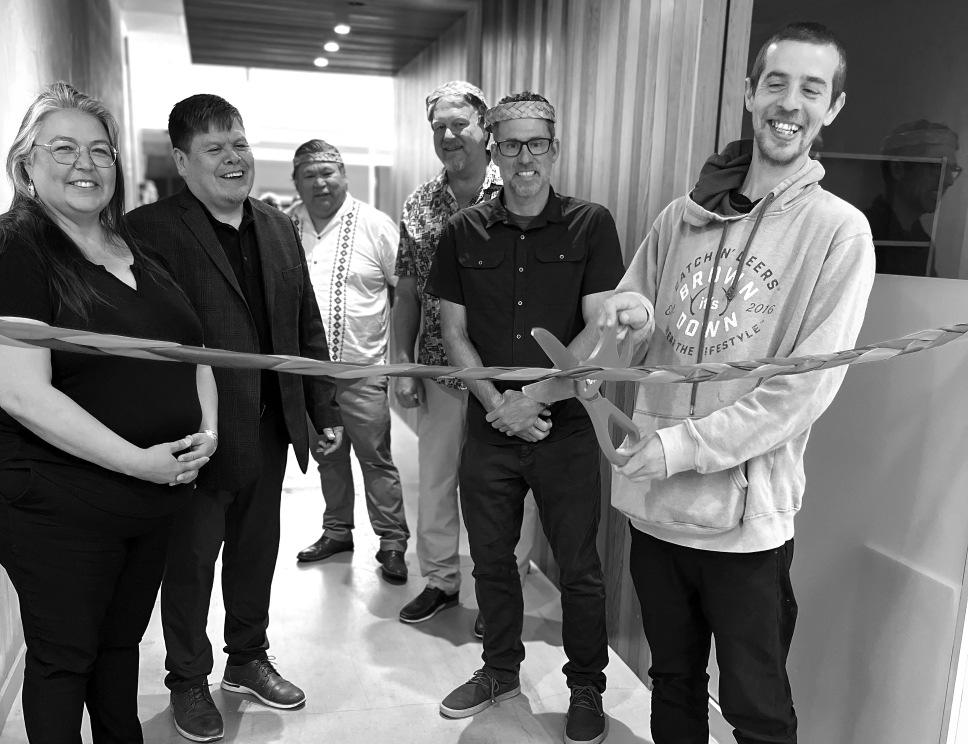
out of the facility. “Then they would have this massive building without any people in it. So, that could’ve been one of the reasons why they reconsidered the sale.”
Sullivan speculated on another possible reason why Nored Developments opted to sell the facility now.
“It’s also a northern building for them,” she said. “And being down in Nanaimo, it made sense for them to sell it to us because we’re here. We became the anchor tenant. If we were to pull out, they would have had a lot of space empty.”

Gary Wilson, KFCN’s director of economic development who is also the CEO of Tiičma Management Services LP, is also pleased a deal was finalized to buy the building. He offered his thoughts on what the purchase means.
“Certainty around not having to worry whether or not the former landlord or a new landlord come along and change the scope or focus of the facility, and then forcing us to find a new residence,” he said. “So, we now have certainty that that won’t happen.”
Wilson also said the objectives of KCFN’s economic corporation are to create opportunities for the Nations to be sovereign and generate revenue and provide opportunities for Nation citizens to work.
“So, owning real estate is diversifying our assets beyond our other businesses we own,” he said. “And so that helps us build equity and be able to leverage that equity, to acquire either additional assets like it or even expand.”
Though there is no timeline when that might happen, Wilson said KCFN officials could one day jump into the clean energy industry.
“We need to focus on energy, clean energy, net zero waste because the community itself is on single-payer power,” he said. “We need to find alternative solutions to single-payer power. To upgrade it is about $60-70 million. There’s no desire by the existing operator to spend that amount of money to support the limited number of users in the territory.
“But we need it for expanding our businesses to grow to build infrastructure and to grow our businesses. We need that additional power. So, there’s potential for us to get involved in clean energy.”
While Tiičma Enterprises appears to be moving forward in positive directions, Wilson said the group of businesses, like others around the world, has been feeling the effects of tariffs implemented by the current U.S. administration.
Wilson added Tiičma’s tourism and hospitality businesses have taken some hits,
as have operators globally.
“The folks that usually spend their money to go further afield, their discretionary income is shrinking with the inflation and the uncertainty around their jobs and the economy,” he said. “Folks are spending probably less than they would normally spend.”
He added people around the world are more money conscious now.
“Globally there’s an impact because of the uncertainties around the world,” he said. “I don’t know the specific numbers locally.”
Wilson added other Tiičma businesses, including its forestry one, could be affected soon by decisions made in the U.S.
“We are in the middle of getting prepared for a (forestry) project in this late fall/early winter,” he said. “We’re not exactly sure what those prices will look like. There are tariffs and on top of that the other trade barriers that we have in trading south and around the world.
“Our biggest customer is theAmerican consumer. So, of course, that’s going to have an impact. We don’t know the effects directly as of yet, because those are still in flux and still negotiations going on.”
For now, Wilson believes it was a prudent decision to buy the Campbell River facility.
“In terms of this building what we’re trying to do is build equity into the businesses that we acquire or partner on,” he said, adding that those can then be leveraged for expansion and growth and supporting small businesses locally in the territory.
But he doesn’t have a crystal ball to know what will happen with possible future projects.
“If we’re acquiring assets and equipment from the south, the prices may be prohibited,” he said. “With development, there’s supply chain issues that could potentially have an impact. We have no plans for that in the short term because we’re trying to manage the existing businesses at this point.”
KCFN photo
Tiičma Enterprises staff celebrate the purchase of their new building by cutting a ribbon.
Events

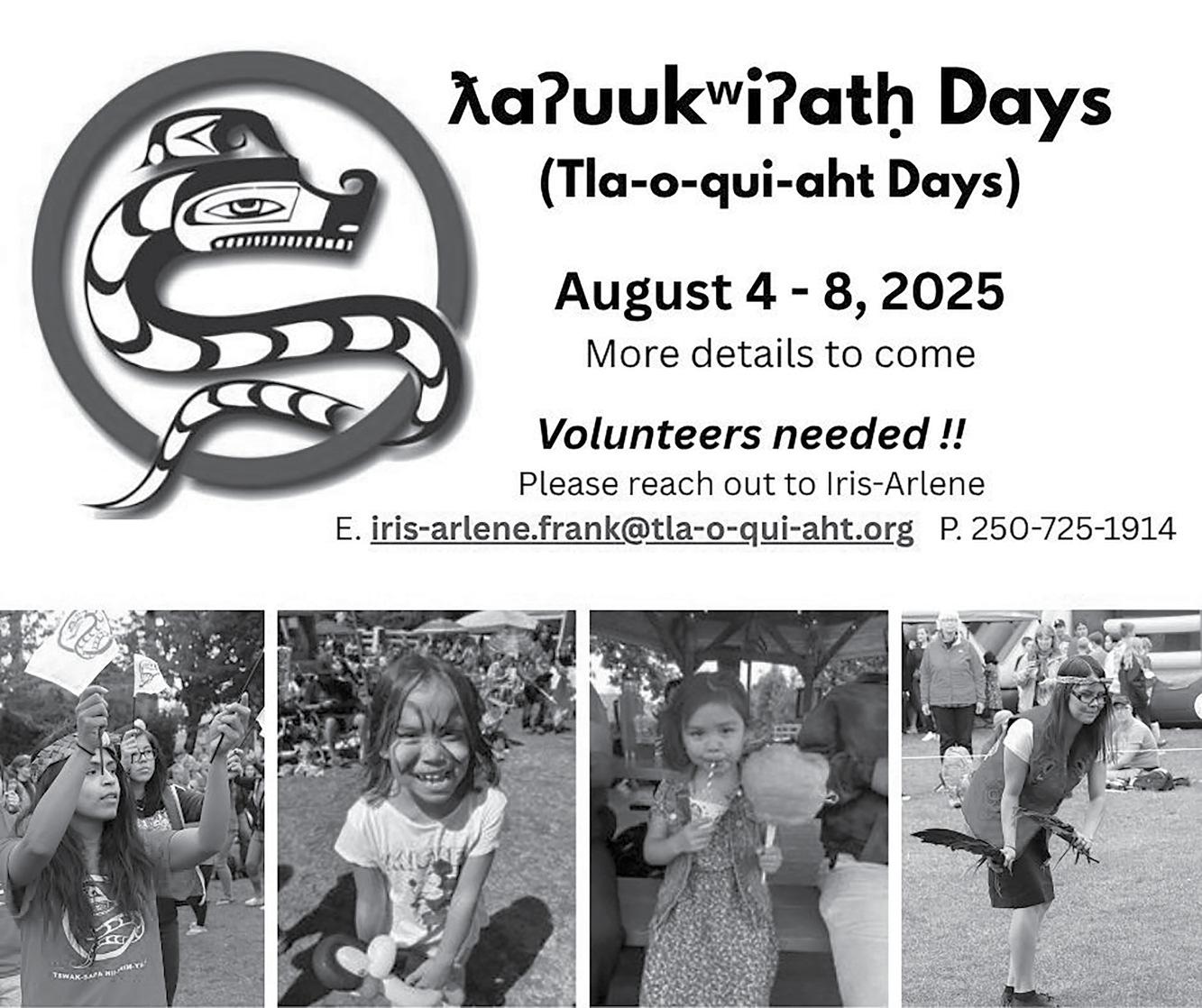


Annual Yuquot Camp-Out
July 27th to 10th
Yuquot
Dates are set; I am taking names for U-chuck, friendly reminder MMFN members are top priority on the list. Email names to recreation@yuquot.ca


&Community Beyond

HealthAbility Fair
October 22nd to 23rd
PortAlberni
Personal services, guest speaker, information tables and dinner with live entertainment. Location:AlberniAthletic Hall. More information to come.
Le er to the Editor
Can you imagine the uproar if someone lit a fire on top of Stonehenge, The Parliament Steps in Ottawa, atop a President at Mount Rushmore or some other Caucasian historical stone feature, artifact or creation with cultural significance? Yet no one will blink an eye or care one bit that those disrespectful ignorant of Indigenous culture pertaining to sacred stone artifacts/features will spray paint and now build a fire atop of Big Rock with hundreds passing by not doing a thing. The Laichwiltach and Homalco First Nations from the Campbell River region of Vancouver Island British Columbia both have ancestral stories and beliefs about Big Rock. This First Nation is disgusted seeing the disrespect to a
stone feature two tribes hold cultural significance to. If I was driving by that evening I would have called the police to charge them under the archeological act of Canada for damaging a cultural significant geological feature and requested firemen be sent to put out the fire. It may seem frivolous, but if something is not said to educate the youth and others, a day will come where they think it’s alright to tag with spray paint other sacred items of we First Nations, such as other geological rock formations, pictographs, petroglyphs, our Ceremonial Big Houses or our totem poles.
Thomas Sewid Kwakwaka’wakw/Cree First Nation
25 Years Ago in Ha-Shilth-Sa
Vol. 27 – No. 14
July 13, 2000
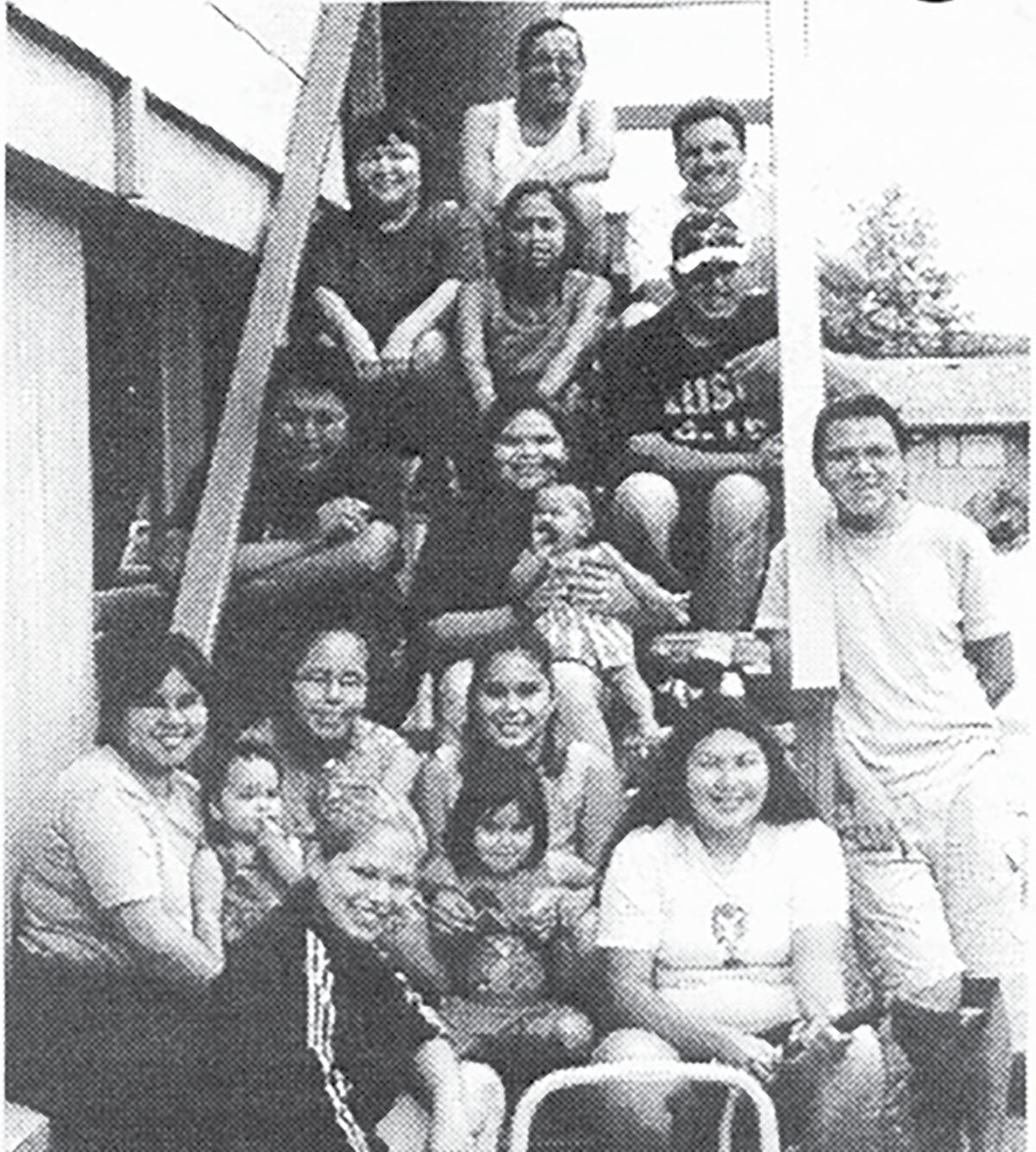
An excited group of Tseshaht youth were busy fundraising and preparing for a journey abroad. The group had a target of $50,000 in funds to raise to cover the cost of the trip to North Island, New Zealand. The trip, an exchange with the Māori people, was a first-hand experience in broadening horizons and sharing culture. The group prepared their own cedar to make dance
regalia and gifts for their host Nations. With the blessing and permission of George Clutesi Jr. they performed the late George Clutesi’s play They were a happy singing people for those they visited. Proud to be sharing their own Tseshaht and Nuu-chah-nulth cultures, the group were excited for the journey, many experiencing their first trip out of province.
Aquick break from their car wash fundraiser at the N.T.C. office. Pictured are Ken Sam, Lena Ross, Samara Marshall, Doug Sam,Adam Fred, Hank Gus, Christine Fred, Fred Dick, Jennifer Gallic, Cheree Thomas, Brandy and Harley Sam, Rose Gus, and Katherine Fred.
DESECRATION OF BIG ROCK

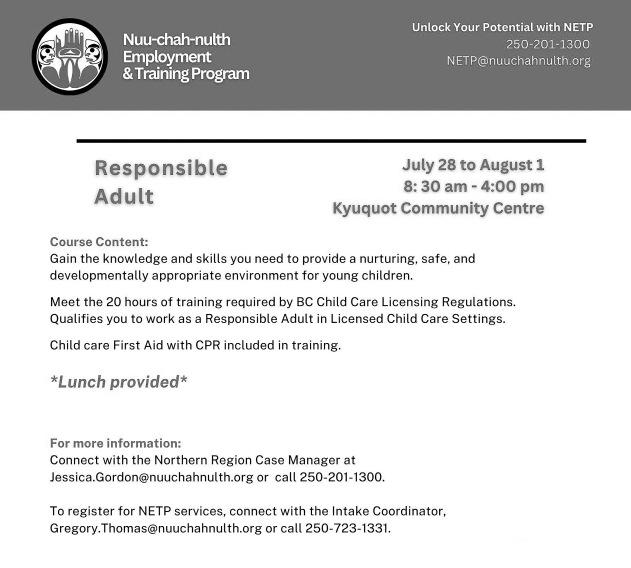
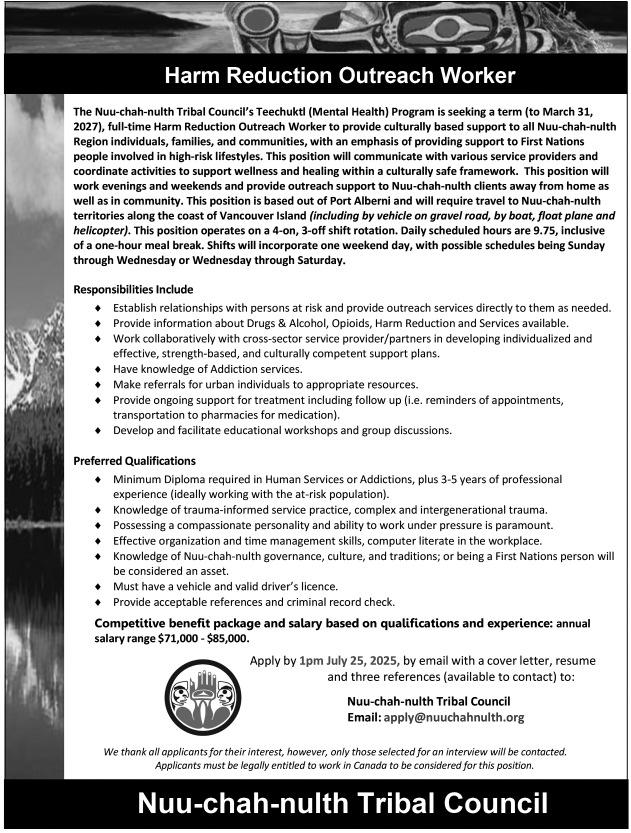
Employment and Training
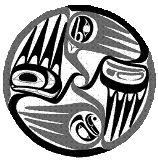
Port Alberni Friendship Centre Volunteers Needed
Need work experience? The Port Alberni Friendship Centre is looking for interested applicants for various positions. Call 250-723-8281
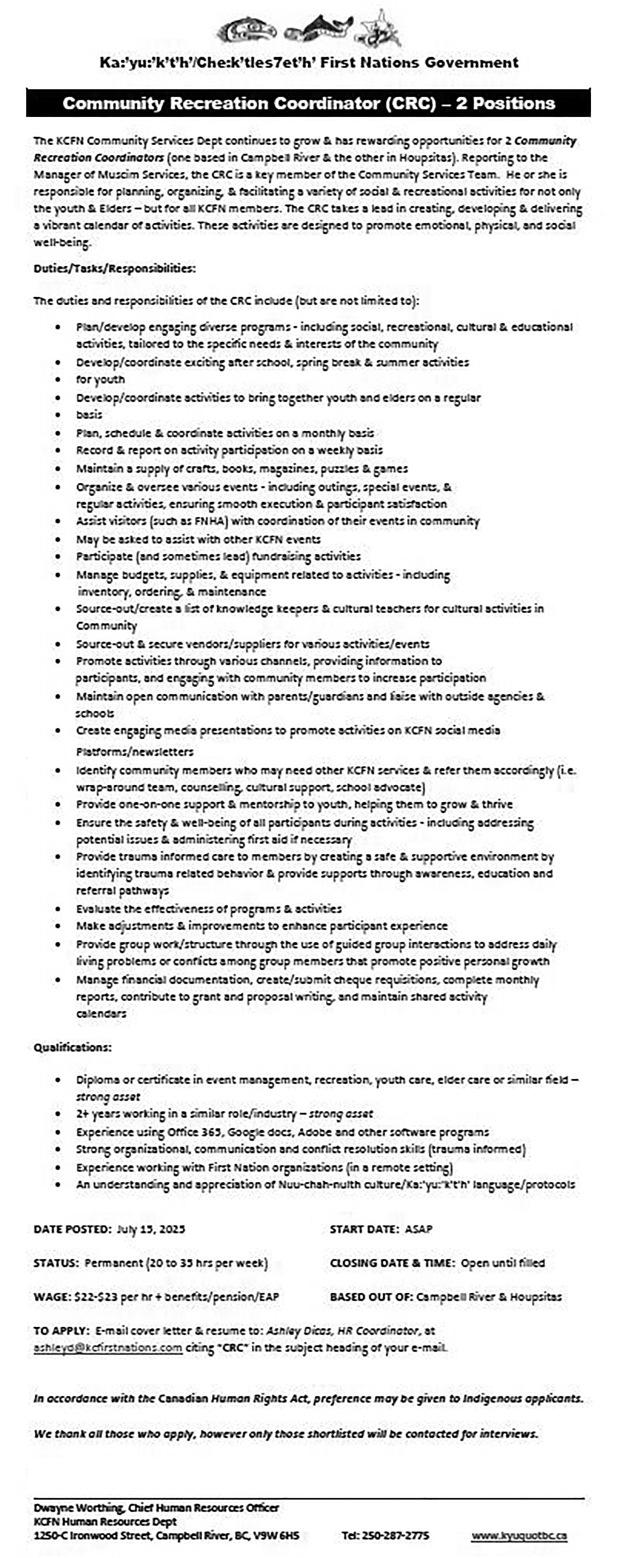

Tseshaht rugby player receives Team Canada funding
Shalaya Valenzuela uses the funds for her long recovery after tearing an ACL playing pro for Minnesota squad
By Sam Laskaris Ha-Shilth-Sa Contributor
Abbotsford, BC – News that she would be receiving some substantial funding came at a rather opportune time for Shalaya Valenzuela.
Valenzuela, a Tseshaht First Nation member, is one of five individuals this year who have been selected to receive the Team Canada IndigenousAward, through the Canadian Olympic Foundation.
Each recipient will receive $20,000 to help cover some of their expenses during the next two years.
Valenzuela was a member of the Canadian women’s rugby sevens club that captured the silver medal at last year’s Paris Olympics.
Valenzuela knows how she will spend a good chunk of her funding. She received a phone call last month that she was an award recipient mere days after tearing theACL in her right knee, while playing pro rugby in Minneapolis.
Surgery to repair her ligament will be on July 16 in New Westminster.
“It was a big surprise,” Valenzuela said of her award. “And this was right after myACL (injury). I just felt a weight off my shoulders because I knew I was going to be okay for this year, not having full insurance for the extras like physio and the extra treatments that are really good for your knee. That wouldn’t be covered. So, I’m using that money. I have the money now to be able to put into my recovery.”
Valenzuela was nominated for the Team Canada IndigenousAward by her national team coach Jocelyn Barrieau.
“I filled out my application and they gave me a call back and wanted to talk and go through my application,” Va-

Shalaya Valenzuela
lenzuela said. “We went through it and they basically said ‘Thank you for being vulnerable and sharing your story and the obstacles you have overcome to get where you are’.”
Valenzuela added she was told award selection officials were impressed with how she had opened up and talked about her athletic journey.
“Then, at the end of the call, it was a surprise and they said I had been selected as a recipient and we’re not just going over your application with you,” she said.
Valenzuela, who is living inAbbotsford this summer, is now preparing for her surgery and what is expected to be a ninemonth recovery period.
“I’ve seen a lot of these situations turn out good and people come back stron-
ger and faster and more motivated,” she said. “So, I definitely know I’ll come out stronger.”
Because of her surgery, Valenzuela will be unable to suit up for the University of British Columbia (UBC) Thunderbirds during their fall season. Last year she was a member of the squad that captured the national women’s university title.
UBC is hosting this year’s Canadian championships in late October and early November.
“I want to continue being a part of the program for this year,” Valenzuela said.
“And they’re also a great support system.And just having this team dynamic I definitely think I’m going to need that energy for me while I’m recovering from surgery.
“I’m going to take full-time classes. I’ll focus on recovery and still be a part of the team.”
Valenzuela is hoping the Thunderbirds can defend their national title.
“That’s what I was really looking forward to, winning the nationals at home with them,” she said. “Unfortunately, I won’t be back in time. But I feel I can add some value on the sidelines and mentor and show leadership skills in other ways than just playing.”
Valenzuela plans to be as involved as possible with the squad. But her exact duties have yet to be specified.
“I’m not going to step on any toes,” she said. “But we’ll see what responsibilities the coaches want to give me. I’m just excited to get them to another national title.”
Valenzuela is obviously disappointed her pro career did not have a smooth start. She was playing in just her second game with the Minnesota-based Twin Cities Gemini when she tore herACL.
The Gemini are one of six teams com-
peting in the Women’s Elite Rugby, an American-based circuit which began this year.
“I was excited to get my foot in the door,” Valenzuela said. “And (my injury) happened unfortunately in the second week I was playing with them. So, things didn’t go as I had hoped.”
Valenzuela was participating in a match against the Chicago Tempest when an opponent tried to tackle her but only ended up grabbing one of her legs.
“My right leg continued with the momentum,” Valenzuela said. “It was just too much momentum and I was getting spun around. So, my leg just went down way too hard in a twisting motion. I heard two loud pops. Basically, I was off it for a whole week.And I got my MRI results back and it was a fully tornACL.”
On a more positive note, Valenzuela is pleased to see more and more Indigenous athletes from across the country receive some recognition.
“I’m super grateful,” she said of her latest award. “And every year I stay with the program I see more opportunities for Indigenous athletes and more support for Indigenous athletes. So, I’m excited to see the support going in the right direction.And I’m super grateful to be in the position that I am and to receive the support to be nominated for these awards.”
Valenzuela is hoping to be back playing with the national team in early 2026.
“I’m hoping to make a return for the second half of the HSBC World Sevens Series,” she said. “Our season starts in December and goes until about the end of May. So, if everything goes okay with my timeline, I should be able to play the second half of the season.”
Valenzuela also has another goal.
“I’m going to continue pushing and being an Indigenous role model,” she said.


